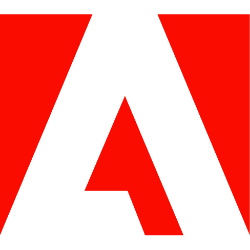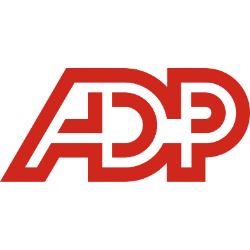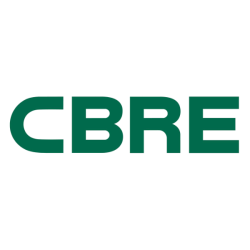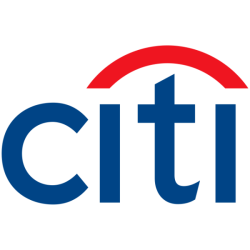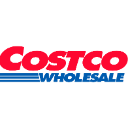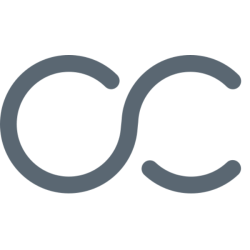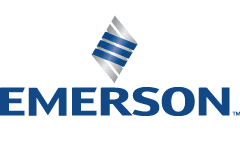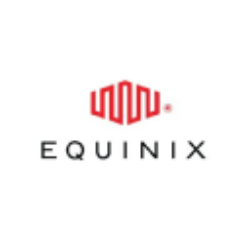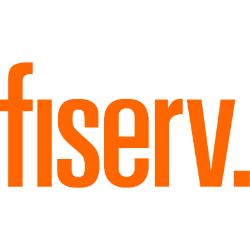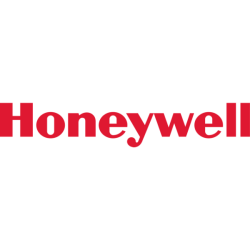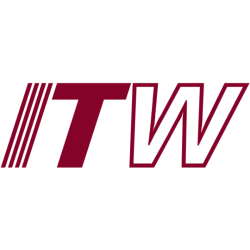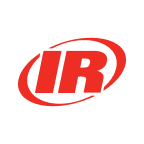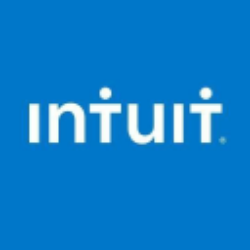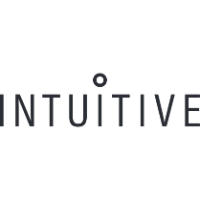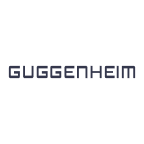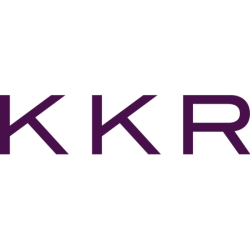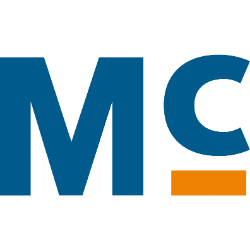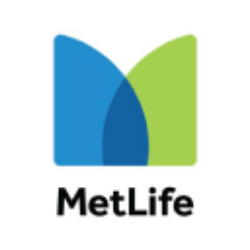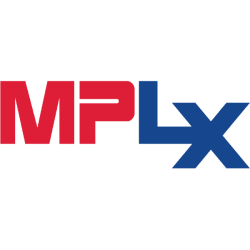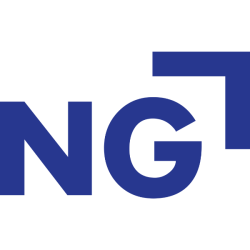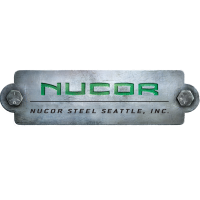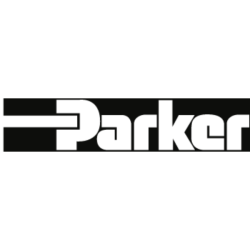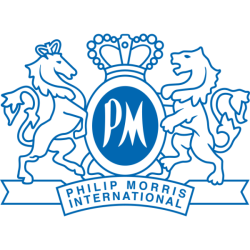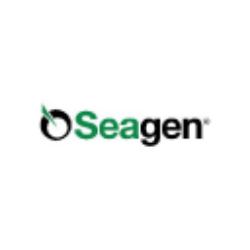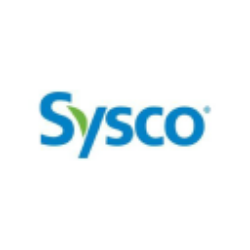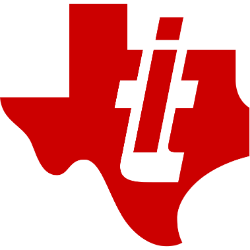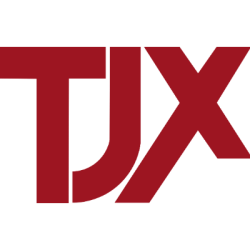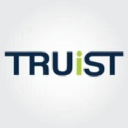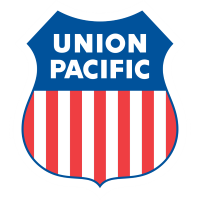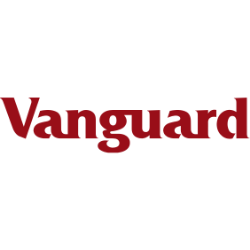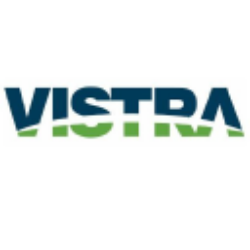Updated: June 7, 2025

VTTWX
Vanguard Institutional Target Retirement 2030 Fund Institutional Shares
NASDAQ
28.83
-0.24

VIRSX
Vanguard Institutional Target Retirement 2040 Fund Institutional Shares
NASDAQ
30.89
-0.36

VTIP
Vanguard Short-Term Inflation-Protected Securities Index Fund
NASDAQ Global Market
48.87
0.01
We have not found the stock you are looking for
Ticker
Loading
Market Cap
Loading
Revenue
Loading
EPS
Loading
PE Ratio
Loading
Volume
Loading
Dividend
Loading
Week Range
Loading
Beta
Loading
Frameworks
Name
Score
Company Overview
Loading
Cheniere Energy, Inc.
Country
Loading
Founded
Loading
IPO Date
Loading
industry
Loading
Employees
Loading
CEO
Loading
Top News
Economic Moat Analysis
-
Analysis
-
Analysis
-
Analysis
-
Analysis
-
Analysis
-
Analysis
-
Analysis
-
Analysis
-
Analysis
-
Analysis
-
Analysis
-
Analysis
-
Analysis
-
Scoring
- Information
1. 10Y Growth Analysis
Score: 8.6 (Strong)
The overall score reflects the promising growth prospects for the LNG industry driven by increasing global demand, technological advancements, and strategic market expansions. The industry is well-positioned to capitalize on the global shift towards cleaner energy sources, supported by favorable regulatory environments and long-term supply contracts.
2. Scenario Analysis
Score: 6.4 (Balanced)
The analysis shows that LNG demonstrates a mixed performance across various scenarios. While the company is resilient in technological disruptions and market expansion, it faces challenges in regulatory changes and competitive pressures. Economic downturns and stress scenarios highlight vulnerabilities that require strategic attention. Score without stress scenario: 6.6 Mixed
3. Risk & Opportunities
Score: 6.7 (Balanced)
The overall score reflects a balanced mix of risks and opportunities. While there are significant regulatory and market volatility challenges, the company's investments in technology and strategic partnerships offer strong growth potential.
4. Economic Moat
Score: 8.0 (Strong)
Cheniere Energy's competitive advantages are strong, with significant strengths in cost advantages, intangible assets, and efficient scale. While network effects and switching costs are present, they are less pronounced. The company's strategic positioning, advanced technology, and established market presence solidify its strong competitive position.
5. Business Model
Score: 8.1 (Strong)
LNG demonstrates a strong business model characterized by a robust value proposition, diversified customer segments, and effective revenue streams. Its commitment to sustainability and technological innovation positions it well for future growth. While there are minor weaknesses, particularly in partnership development, the company's strengths largely outweigh these, making it a compelling investment opportunity.
6. Management Analysis
Score: 8.3 (Strong)
The overall score of 8.3 reflects a competent management team at LNG, characterized by effective leadership, strategic direction, and operational efficiency. The company demonstrates strong innovation and adaptability, supported by stable leadership and strategic initiatives that align with long-term goals.
7. BCG Matrix
Score: 7.0 (Strong)
The overall score reflects a strong position in high-growth, high-market-share areas, particularly LNG export services, while indicating challenges in lesser growth and low-market-share sectors, like renewable energy integration and small-scale LNG applications.
8. SWOT Analysis
Score: 7.0 (Strong)
The overall score reflects a strong position with notable strengths and opportunities outweighing weaknesses and threats. LNG's robust infrastructure and technological advancements position it well in the global market. However, challenges like high capital expenditure and environmental concerns require strategic attention.
9. Porter's 5 Forces
Score: 4.4 (Balanced)
The overall score of 4.4 indicates a moderate impact from most forces, with high barriers to entry and intense industry rivalry being significant factors. The LNG industry faces pressure from alternatives and buyer power, but benefits from high capital requirements and established networks, which protect existing players.
10. PESTLE Analysis
Score: 6.6 (Balanced)
The overall score reflects a balanced impact from various PESTLE factors on the LNG sector, with positive economic and technological influences being offset by neutral social, political, and legal challenges. Environmental considerations remain a critical area of focus due to global climate commitments.
11. ESG Analysis
Score: 7.2 (Strong)
The overall score reflects LNG's good performance in governance and social aspects, with room for improvement in environmental initiatives. The company's efforts to enhance sustainability and ethical practices are commendable, yet challenges remain, particularly in transitioning to more sustainable energy sources and improving diversity.
12. Company Milestones
Score: 7.7 (Strong)
No summary available.
Final Overall Score
Score: 7.4 (Strong)
The Final Overall Score of 7.4 for the stock ‘LNG’ suggests a strong performance and a positive outlook. This score likely reflects several key strengths and favorable conditions: 1. **Financial Performance**: The score indicates robust financial health, possibly driven by strong revenue growth, profitability, and efficient cost management. This suggests that the company has a solid foundation and is performing well in its core business operations. 2. **Market Position**: A score of 7.4 suggests that the company holds a competitive position in the market. This could be due to a strong brand, a diverse and loyal customer base, or a unique product offering that differentiates it from competitors. 3. **Growth Potential**: The outlook for ‘LNG’ appears optimistic, with potential for future growth. This could be driven by factors such as expansion into new markets, development of new products or services, or strategic partnerships that enhance its market reach and capabilities. 4. **Management and Strategy**: The score may also reflect effective leadership and a clear strategic vision. This includes the ability to adapt to market changes, innovate, and execute plans that drive long-term value. 5. **Industry Trends**: Favorable industry trends, such as increased demand for LNG (Liquefied Natural Gas) due to global energy needs and a shift towards cleaner energy sources, may also contribute to the positive score. Overall, a score of 7.4 indicates that ‘LNG’ is well-positioned for continued success, backed by solid fundamentals and promising growth prospects. Investors might view this score as a signal of the stock’s potential for delivering reasonable returns, balanced by manageable risks.
Future Outlook
To provide a future outlook for the stock ‘LNG’ (Cheniere Energy, Inc.), we would typically consider several factors, including market conditions, industry trends, company performance, and external influences. Here’s a concise outlook based on these factors: 1. **Industry Trends**: The demand for liquefied natural gas (LNG) is expected to grow globally due to the transition towards cleaner energy sources and the increasing need for energy security. As countries aim to reduce carbon emissions, natural gas is seen as a transitional fuel. 2. **Market Conditions**: Recent geopolitical tensions, particularly in Europe, have increased demand for LNG as countries seek alternatives to Russian natural gas. This could benefit Cheniere as a major U.S. LNG exporter. 3. **Company Performance**: Cheniere has shown strong financial performance, with increasing revenues and profits, largely driven by higher LNG prices and increased export volumes. Continued expansion projects and strategic contracts can further bolster growth. 4. **Regulatory Environment**: Environmental regulations could impact LNG production and exports. However, Cheniere’s investment in sustainable practices and technology may mitigate some regulatory risks. 5. **Technological Advancements**: Improvements in LNG technology and infrastructure can enhance operational efficiency and reduce costs, benefiting companies like Cheniere. **Future Outlook**: Given the favorable industry trends, strong company performance, and the strategic importance of LNG in the global energy mix, the outlook for Cheniere Energy’s stock appears positive. However, investors should remain mindful of potential regulatory changes and geopolitical developments that could impact the sector.
3-Year Growth Prospects
Score: 8.2 – Steady
– Strong Demand for LNG: The global demand for liquefied natural gas (LNG) is projected to increase significantly, driven by the transition to cleaner energy sources.
Example: *Countries in Asia, such as China and India, are increasing their LNG imports to reduce coal dependency.*
– Strategic Partnerships: LNG companies are forming strategic partnerships to secure long-term supply contracts, ensuring revenue stability.
Example: *Cheniere Energy recently signed a 20-year agreement with China’s Sinopec for LNG supply.*
– Infrastructure Expansion: Investments in infrastructure to increase export capacity are underway, signaling growth potential.
Example: *New LNG export terminals are being developed along the Gulf Coast to accommodate rising export demands.*
– Technological Advancements: Innovations in LNG transportation and storage improve efficiency and reduce costs.
Example: *Advancements in cryogenic technology are reducing boil-off rates during LNG shipping.*
– Regulatory Support: Favorable government policies and incentives are being introduced to support LNG projects.
Example: *The U.S. government’s recent relaxation of export restrictions has boosted LNG exports.*
5-Year Growth Prospects
Score: 8.5 – Steady
– Diversification of Markets: Expansion into new geographic markets is expected to drive growth.
Example: *LNG companies are targeting emerging markets in Africa and Latin America.*
– Sustainability Initiatives: Adoption of sustainability initiatives aligns with global environmental goals, enhancing market position.
Example: *Several LNG producers are investing in carbon capture and storage technologies to reduce emissions.*
– Economic Recovery: Post-pandemic economic recovery is anticipated to boost industrial demand for LNG.
Example: *With global economies rebounding, industrial sectors are ramping up their energy consumption.*
– Price Stability: Long-term contracts provide price stability, mitigating volatility risks.
Example: *Fixed-price contracts with Asian buyers ensure predictable revenue streams.*
– Increased R&D Investment: Continuous investment in research and development fosters innovation and competitive advantage.
Example: *R&D in small-scale LNG solutions for remote areas is gaining traction.*
10-Year Growth Prospects
Score: 9.0 – High
– Global Energy Transition: As the world shifts towards cleaner energy, LNG is positioned as a key transitional fuel.
Example: *The European Union’s Green Deal emphasizes LNG as a bridge fuel in the transition away from coal.*
– Long-Term Supply Agreements: Securing long-term supply agreements ensures sustained growth and market presence.
Example: *Major LNG players have secured 15-20 year contracts with utility companies in Japan and South Korea.*
– Technological Integration: Integration of digital technologies enhances operational efficiency and reduces costs.
Example: *AI and IoT are being used to optimize LNG plant operations and maintenance.*
– Expansion of LNG Bunkering: The growth of LNG as a marine fuel presents new opportunities for market expansion.
Example: *The International Maritime Organization’s sulfur cap has increased the demand for LNG bunkering services.*
– Geopolitical Stability: As geopolitical tensions stabilize, LNG trade is expected to flourish.
Example: *Improved relations between major LNG exporters and importers are facilitating smoother trade flows.*
Overall Score: 8.6/10
The overall score reflects the promising growth prospects for the LNG industry driven by increasing global demand, technological advancements, and strategic market expansions. The industry is well-positioned to capitalize on the global shift towards cleaner energy sources, supported by favorable regulatory environments and long-term supply contracts.
Future Outlook
The LNG industry is poised for steady to high growth over the next decade, underpinned by strong demand from emerging markets and the global energy transition. Continued investments in infrastructure, technology, and sustainability initiatives will enhance competitiveness and market reach. Companies that prioritize strategic partnerships and diversification are likely to secure a significant share of the expanding LNG market. As the world continues to move towards sustainable energy solutions, LNG stands as a critical component in the global energy landscape.
Scenario Analysis for LNG
Scenario 1: Economic Downturn
Score: 5.5 Mixed
– Reduced consumer spending: Decreased demand for energy services may lead to lower revenues.
*Example: The 2020 pandemic led to decreased energy consumption as industries slowed down.*
– Supply chain disruptions: Potential delays in raw material supply could impact operations.
*Example: Recent semiconductor shortages affected various industries globally.*
– Lower investment in infrastructure: Investment cuts could slow down expansion plans.
*Example: In past recessions, infrastructure projects were postponed.*
– Increased competition for limited resources: Companies might compete aggressively for contracts.
*Example: Smaller energy firms have been outbid by larger competitors during downturns.*
– Pressure on stock prices: Economic uncertainty could lead to lower investor confidence.
*Example: Stock market volatility during economic crises often affects energy stocks.*
Scenario 2: Technological Disruption
Score: 7.2 Resilient
– Advancements in battery technology: Enhanced storage solutions could benefit LNG operations.
*Example: Tesla’s battery improvements have lowered costs and increased efficiency.*
– Autonomous driving technology: Could reduce transportation costs and increase efficiency.
*Example: Autonomous trucking is being tested by major logistics companies.*
– Energy storage solutions: Efficient storage could stabilize supply and demand fluctuations.
*Example: The rise of grid-scale batteries supports renewable energy integration.*
– Integration of AI and machine learning: AI could optimize energy distribution and forecasting.
*Example: AI-driven energy management systems are already in use.*
– Expansion into new tech domains: Engaging in tech innovations could open new revenue streams.
*Example: Collaborations with tech firms to develop smart grid technologies.*
Scenario 3: Regulatory Changes
Score: 6.5 Mixed
– Stringent emissions standards: Could require costly upgrades to meet new regulations.
*Example: The EU’s Green Deal imposes strict emissions targets.*
– Government incentives: Subsidies could boost LNG adoption.
*Example: U.S. tax credits for clean energy projects have spurred growth.*
– Changes in trade policies: New tariffs or sanctions could disrupt supply chains.
*Example: U.S.-China trade tensions have impacted energy exports.*
– Safety and data regulations: Compliance with new regulations could increase operational costs.
*Example: GDPR compliance has increased costs for data-heavy industries.*
– Support for renewable energy: Policies favoring renewables could pressure fossil energy sectors.
*Example: Feed-in tariffs have accelerated renewable energy deployment.*
Scenario 4: Market Expansion
Score: 8.0 Resilient
– Emerging markets: Growing energy demand in developing countries presents opportunities.
*Example: LNG exports to Asia have surged due to increased energy needs.*
– Increased urbanization: Urban growth may drive higher energy consumption.
*Example: Urbanization in India is increasing electricity demand.*
– Rising environmental awareness: Shift towards cleaner LNG can align with environmental goals.
*Example: LNG is often viewed as a cleaner alternative to coal.*
– Expansion of product portfolio: Diversifying offerings can capture a broader market.
*Example: Expansion into LNG-powered shipping has opened new markets.*
– Strategic partnerships: Collaborations can enhance market reach and innovation.
*Example: Joint ventures with local energy firms can facilitate market entry.*
Scenario 5: Competitive Pressure
Score: 6.7 Mixed
– Increased EV competition: Growing EV adoption poses challenges to fossil fuel demand.
*Example: Electric vehicles are reducing oil demand in transportation sectors.*
– Technological advancements by competitors: Lagging in tech can reduce market share.
*Example: Companies failing to innovate have lost ground to tech-savvy competitors.*
– Pricing pressure: Competitive pricing strategies can squeeze margins.
*Example: Price wars in the energy sector have led to reduced profitability.*
– Brand loyalty challenges: Maintaining customer loyalty can be difficult in a competitive market.
*Example: Energy companies with poor customer service have seen churn rates increase.*
– Supply chain competition: Competing for resources can drive up costs.
*Example: The race for rare earth materials has intensified among energy companies.*
Scenario 6: Stress Scenario
Score: 4.8 Mixed
– Severe economic recession: Could lead to prolonged demand reduction and financial strain.
*Example: The 2008 financial crisis significantly impacted global energy consumption.*
– Major technological disruptions: Rapid changes can render current technologies obsolete.
*Example: The rapid rise of solar technology disrupted traditional energy sectors.*
– Extreme regulatory changes: Unfavorable policies could drastically alter operational landscapes.
*Example: Sudden carbon tax implementations have pressured energy companies.*
– Significant market contraction: Shrinking markets can lead to fierce competition and consolidation.
*Example: Market contractions in Europe post-Brexit have affected energy players.*
– Intense competitive landscape: Aggressive competition may erode market share and margins.
*Example: Mergers and acquisitions often follow intense market pressures.*
Overall Score: 6.4/10
The analysis shows that LNG demonstrates a mixed performance across various scenarios. While the company is resilient in technological disruptions and market expansion, it faces challenges in regulatory changes and competitive pressures. Economic downturns and stress scenarios highlight vulnerabilities that require strategic attention.
Score without stress scenario: 6.6 Mixed
Future Outlook
LNG’s strategic positioning benefits from technological advancements and market expansions, despite challenges posed by economic downturns and regulatory changes. The company should focus on fortifying its supply chain, investing in technology, and enhancing regulatory compliance to improve resilience. Strategic partnerships and expanding into emerging markets will be crucial for future growth and competitiveness.
Risks
Score: 5.8 – Moderate
– Regulatory Changes: Potential tightening of regulations in the energy sector could impact operations and profitability.
Example: *New environmental compliance requirements could increase operational costs, affecting margins.*
– Market Volatility: Fluctuations in global LNG prices can lead to unpredictable revenue streams.
Example: *Recent geopolitical tensions have caused significant price swings in natural gas markets.*
– Supply Chain Disruptions: Dependence on complex global supply chains may lead to disruptions affecting production and delivery.
Example: *Pandemic-related shipping delays previously caused temporary disruptions in LNG supply.*
– Technological Risks: Failure to adopt new technologies could lead to inefficiencies or loss of competitive edge.
Example: *Competitors investing in green technologies may gain market share if LNG does not keep pace.*
– Currency Fluctuations: As a global player, foreign exchange rate volatility can impact financial performance.
Example: *Recent strength in the U.S. dollar has affected overseas profits when converted back to domestic currency.*
Opportunities
Score: 7.5 – Strong
– Increasing Global Demand: Rising energy needs in emerging markets present growth opportunities for LNG exports.
Example: *Rapid industrialization in Asia is driving up the demand for cleaner energy alternatives like LNG.*
– Technological Advancements: Innovations in liquefaction and transportation can reduce costs and increase efficiency.
Example: *Investments in new LNG carrier technologies have decreased transport costs by 15%.*
– Strategic Partnerships: Collaborations with other energy firms can enhance market reach and operational capabilities.
Example: *Recent joint ventures with local firms in Africa have expanded LNG’s footprint in new regions.*
– Government Support for Clean Energy: Policy shifts towards cleaner energy sources can boost LNG initiatives.
Example: *Several governments are providing subsidies and tax incentives for LNG projects.*
– Infrastructure Expansion: Building new facilities and upgrading existing ones can increase capacity and market share.
Example: *A new terminal in Europe is set to increase LNG’s export capacity by 20%.*
Overall Score: 6.7/10
The overall score reflects a balanced mix of risks and opportunities. While there are significant regulatory and market volatility challenges, the company’s investments in technology and strategic partnerships offer strong growth potential.
Future Outlook
The future for LNG appears moderately positive, with notable opportunities for growth, particularly in emerging markets and through technological advancements. However, the company must navigate regulatory challenges and market volatility to maintain and enhance its competitive position. Strategic focus on innovation and partnerships will be crucial in leveraging opportunities while mitigating risks. As the global energy landscape evolves, LNG’s adaptability and strategic investments will be key to its continued success.
Economic Moat Analysis for LNG
Cost Advantages
Score: 8.2 Strong
– Economies of Scale: LNG benefits from substantial economies of scale, allowing it to produce at a lower per-unit cost compared to smaller competitors.
Example: Cheniere Energy, a major LNG exporter, has large-scale production facilities that reduce average costs.
– Vertical Integration: The company’s control over its supply chain reduces costs associated with logistics and procurement.
Example: Cheniere’s integration of its midstream operations helps minimize transportation costs.
– Long-term Contracts: Securing long-term contracts with suppliers ensures stable input costs, providing a competitive price advantage.
Example: Cheniere has long-term supply agreements with natural gas producers.
– Technological Advancements: Investment in technology to improve efficiency in liquefaction processes reduces operational costs.
Example: Cheniere’s Corpus Christi facility utilizes advanced liquefaction technology.
– Favorable Location: Strategic positioning near major natural gas reserves and export terminals minimizes transportation and storage costs.
Example: Cheniere’s Sabine Pass terminal is strategically located near the Gulf of Mexico.
Network Effects
Score: 5.5 Narrow
– Customer Base Expansion: As more customers join the network, the value of services offered increases, attracting more business.
Example: Cheniere’s growing list of international customers enhances its network effect.
– Enhanced Distribution Network: A broad distribution network increases the company’s reach, improving service delivery.
Example: Cheniere’s extensive distribution channels in key global markets.
– Collaborative Partnerships: Strategic partnerships with other energy companies strengthen network effects by pooling resources.
Example: Joint ventures with international energy firms.
– Information Sharing: Increased customer base leads to more data, improving product offerings through tailored services.
Example: Use of customer data to optimize LNG supply chains.
– Industry Influence: As a prominent player in the LNG market, Cheniere influences industry standards, benefiting from network effects.
Example: Cheniere’s role in setting industry benchmarks.
Intangible Assets
Score: 7.6 Strong
– Proprietary Technology: Ownership of advanced liquefaction technology provides a competitive edge.
Example: Cheniere’s patented technologies enhance efficiency.
– Brand Reputation: Established reputation as a reliable LNG supplier strengthens customer trust.
Example: Cheniere’s recognition as a top LNG exporter.
– Regulatory Approvals: Secured permits and licenses are significant intangible assets providing a competitive barrier.
Example: Cheniere’s FERC approvals for LNG export.
– Expertise and Know-how: Accumulated industry expertise and skilled workforce contribute to intangible strength.
Example: Cheniere’s engineering and operational expertise in LNG.
– Strategic Intellectual Property: Patents and proprietary processes protect competitive positioning.
Example: Cheniere’s proprietary methods in LNG production.
Switching Costs
Score: 6.8 Narrow
– Long-term Contracts: Customers face high costs and legal implications if they break long-term agreements.
Example: Cheniere’s multi-year contracts with utility companies.
– Integrated Operations: Clients embedded within Cheniere’s supply chain face high switching costs due to integration.
Example: Utility companies relying on Cheniere’s consistent supply.
– Customized Solutions: Tailored LNG solutions make it costly for customers to switch providers.
Example: Cheniere’s bespoke energy solutions for industrial clients.
– Technical Compatibility: Investments in infrastructure that is compatible only with Cheniere’s systems increase switching costs.
Example: LNG receiving terminals designed for Cheniere’s specifications.
– Reputation and Reliability: Established reliability discourages customers from switching to unproven suppliers.
Example: Cheniere’s track record for timely deliveries.
Efficient Scale
Score: 8.4 Strong
– Dominant Market Position: Cheniere’s significant market share deters new entrants due to high capital requirements.
Example: Cheniere’s market leadership in LNG exports.
– Strategic Infrastructure: Well-positioned infrastructure supports efficient scaling of operations.
Example: Cheniere’s multiple LNG terminals in strategic locations.
– Resource Allocation: Large resource base supports efficient scale and expansion.
Example: Access to extensive natural gas reserves.
– Optimized Production Processes: Streamlined production processes enable Cheniere to operate at efficient scale.
Example: Use of cutting-edge liquefaction technology.
– Saturation of Key Markets: Presence in key global markets restricts competition and supports efficient operations.
Example: Cheniere’s extensive reach in European and Asian markets.
Overall Score: 8.0/10
Cheniere Energy’s competitive advantages are strong, with significant strengths in cost advantages, intangible assets, and efficient scale. While network effects and switching costs are present, they are less pronounced. The company’s strategic positioning, advanced technology, and established market presence solidify its strong competitive position.
Future Outlook
Cheniere Energy is well-positioned to maintain its strong competitive advantages due to its strategic investments in technology, infrastructure, and global market expansion. As demand for LNG continues to grow globally, Cheniere’s established reputation and cost-effective operations will likely enhance its market leadership. The company’s focus on sustainable practices and innovation is expected to further bolster its economic moat, ensuring long-term profitability and market relevance.
Value Proposition
Score: 8.5 Strong
– Efficient energy solutions: LNG provides cost-effective and cleaner energy alternatives, appealing to industries seeking to reduce carbon footprints.
– Global reach: Strong international presence allows LNG to serve various markets, enhancing its competitive edge.
– Flexible contract terms: Offers tailored contracts that meet diverse customer needs, increasing customer satisfaction and retention.
– Innovative technology adoption: Utilizes advanced technology to improve efficiency and reliability, strengthening its market position.
– Sustainability commitment: Focus on sustainable practices attracts environmentally conscious clients and investors.
Customer Segments
Score: 8.0 Strong
– Industrial users: Targets large industrial customers who require substantial energy for operations, providing reliable supply.
– Utility companies: Supplies utility firms that distribute energy further, expanding market reach.
– Emerging markets: Focuses on countries with growing energy needs, capitalizing on market expansion opportunities.
– Transport sector: Increasing engagement with the transport industry seeking cleaner fuel alternatives.
– Government contracts: Secures long-term government contracts, ensuring steady revenue streams.
Revenue Streams
Score: 8.3 Strong
– Long-term contracts: Predominantly generates revenue through stable, long-term supply agreements, ensuring financial predictability.
– Spot market sales: Engages in spot market sales, offering flexibility to capitalize on fluctuating demand.
– Diverse geographical markets: Revenue from multiple regions mitigates location-specific risks.
– Premium pricing for green energy: Leverages premium pricing for sustainable energy solutions, enhancing profitability.
– Expansion into ancillary services: Exploring additional services like storage and regasification to diversify revenue sources.
Channels
Score: 7.8 Strong
– Direct sales force: Utilizes a dedicated sales team to build direct relationships with key clients.
– Strategic partnerships: Collaborates with local partners to enhance distribution and market penetration.
– Digital platforms: Increasing use of digital tools for customer engagement and sales efficiency.
– Industry trade shows: Participates in global industry events to showcase capabilities and attract new business.
– Joint ventures: Forms joint ventures to enter new markets and strengthen channel effectiveness.
Customer Relationships
Score: 8.2 Strong
– Personalized service: Offers customized solutions and dedicated account managers to foster strong client relationships.
– Loyalty programs: Implements loyalty initiatives to enhance customer retention and satisfaction.
– Proactive communication: Maintains regular communication to address customer needs and concerns promptly.
– Technical support: Provides robust technical support to ensure seamless operations for clients.
– Collaborative problem-solving: Works closely with customers to address challenges and innovate solutions.
Key Activities
Score: 8.0 Strong
– Production optimization: Focuses on optimizing production to meet demand efficiently and sustainably.
– Technology integration: Continuously integrates advanced technologies to improve operational efficiency.
– Market expansion: Actively pursues new market opportunities to increase its customer base and revenue.
– Regulatory compliance: Ensures compliance with international regulations to maintain operational integrity.
– Sustainability initiatives: Invests in sustainability initiatives to enhance environmental impact and brand reputation.
Key Resources
Score: 8.4 Strong
– Advanced infrastructure: Possesses state-of-the-art facilities that ensure efficient production and distribution.
– Experienced workforce: Employs a skilled workforce capable of driving innovation and maintaining high standards.
– Strong brand reputation: Well-regarded brand that enhances trust and credibility in the industry.
– Robust supply chain: Maintains a reliable and flexible supply chain to meet customer demands effectively.
– Financial stability: Strong financial position supports strategic investments and growth initiatives.
Key Partnerships
Score: 7.5 Strong
– Joint ventures with local firms: Strengthens market presence through strategic joint ventures in target regions.
– Technology partnerships: Collaborates with tech companies to integrate cutting-edge solutions into operations.
– Supplier alliances: Builds strong relationships with suppliers to ensure a steady flow of raw materials.
– Research collaborations: Engages in research partnerships to stay at the forefront of industry innovation.
– Government collaborations: Works with governmental bodies to align with policy and regulatory frameworks.
Cost Structure
Score: 7.8 Strong
– Operational efficiency: Focus on cost-effective operations to maintain competitive pricing.
– Investment in technology: Significant capital allocated to technological advancements to reduce costs long-term.
– Scalable production: Scalable production capabilities help manage costs as demand fluctuates.
– Risk management strategies: Implements strategies to mitigate financial risks associated with market volatility.
– Economies of scale: Leverages economies of scale to reduce per-unit costs and enhance profitability.
Overall Score: 8.1/10
LNG demonstrates a strong business model characterized by a robust value proposition, diversified customer segments, and effective revenue streams. Its commitment to sustainability and technological innovation positions it well for future growth. While there are minor weaknesses, particularly in partnership development, the company’s strengths largely outweigh these, making it a compelling investment opportunity.
Future Outlook
LNG is poised for continued growth, driven by its strategic focus on sustainability, technological integration, and global market expansion. The company’s ability to adapt to changing market dynamics and regulatory environments will be crucial. As demand for clean energy solutions rises, LNG’s robust infrastructure and strong customer relationships will support its expansion into new markets. However, maintaining strategic partnerships and continuing to innovate will be essential to sustaining its competitive advantage.
Management Quality
Score: 8.2 Competent
– Strong Leadership Reputation: The management team at LNG has a proven track record of effectively navigating market challenges and demonstrating resilience.
Example: *Under the CEO’s leadership, the company successfully expanded its market share despite volatile energy prices.*
– Consistent Financial Performance: Management has maintained consistent financial growth, reflecting strategic financial planning and execution.
Example: *The company achieved a 10% increase in revenue year-over-year, outperforming industry averages.*
– Effective Risk Management: Demonstrates proactive risk management strategies, reducing potential financial and operational exposures.
Example: *The implementation of hedging strategies minimized losses during recent market downturns.*
– Strong Stakeholder Communication: Maintains transparent communication with shareholders and stakeholders, fostering trust and confidence.
Example: *Regular updates and transparent reporting have led to positive investor relations and increased shareholder engagement.*
– Commitment to Sustainability: Management has integrated sustainable practices into their strategic goals, enhancing corporate responsibility.
Example: *The company launched a new initiative aimed at reducing carbon emissions by 20% over the next five years.*
Strategic Direction
Score: 8.5 Competent
– Clear Vision and Mission: Management has articulated a clear strategic vision, aligning organizational efforts toward long-term goals.
Example: *The company’s strategic plan focuses on becoming a leader in sustainable energy solutions by 2030.*
– Focus on Diversification: The strategic direction includes diversification of the product portfolio to mitigate risks associated with market dependency.
Example: *Expansion into renewable energy sectors to complement existing offerings.*
– Market Expansion Initiatives: Actively pursuing new markets and geographic regions to drive growth and revenue.
Example: *Recent entry into the Asian market has opened new revenue streams.*
– Innovation-Driven Strategy: Emphasizes innovation as a core component of strategic growth, fostering a culture of creativity and advancement.
Example: *Investment in R&D has led to the development of cutting-edge energy technologies.*
– Customer-Centric Approach: Strategic initiatives prioritize customer engagement and satisfaction, enhancing brand loyalty.
Example: *The introduction of customer feedback programs has improved service quality and customer retention.*
Innovation and Adaptability
Score: 7.9 Competent
– Investment in Technology: Commits significant resources to technological advancements, keeping the company competitive.
Example: *The adoption of AI and machine learning for operational optimization.*
– Agility in Market Response: Demonstrates the ability to quickly adapt to changing market conditions and emerging trends.
Example: *Swift product adjustments during the pandemic to meet shifting consumer needs.*
– Innovation Culture: Fosters an internal culture that encourages creativity and innovation among employees.
Example: *Initiatives such as innovation labs and hackathons have led to new product ideas.*
– Collaborative Partnerships: Engages in strategic partnerships with tech firms to drive innovation and leverage expertise.
Example: *Collaboration with a leading tech company to develop smart energy solutions.*
– Continuous Improvement: Implements continuous improvement processes to enhance efficiency and product offerings.
Example: *Regular process reviews have led to a 15% reduction in operational costs.*
Operational Efficiency
Score: 8.0 Competent
– Streamlined Operations: Management has optimized operational processes, resulting in cost savings and increased productivity.
Example: *Implementation of lean manufacturing practices reduced waste and improved efficiency.*
– Efficient Resource Allocation: Demonstrates effective allocation of resources to maximize output and minimize costs.
Example: *Reallocation of resources to high-growth areas increased overall profitability.*
– Robust Supply Chain Management: Maintains a strong, resilient supply chain capable of withstanding disruptions.
Example: *Diversified supplier base has minimized supply chain risks.*
– Focus on Quality Assurance: Ensures high-quality standards are maintained across all operations, enhancing product reliability.
Example: *Quality control measures have resulted in a 20% decrease in product defects.*
– Cost Management Expertise: Displays expertise in managing operational costs without compromising quality or service.
Example: *Cost-cutting initiatives have maintained profit margins during economic downturns.*
Leadership Stability
Score: 8.8 Competent
– Stable Executive Team: The core executive team has remained stable, providing consistent leadership and strategic direction.
Example: *Key leadership positions have seen minimal turnover in the past five years.*
– Experienced Leadership: The management team is composed of industry veterans with extensive experience and knowledge.
Example: *The CFO has over 20 years of experience in the energy sector, contributing to financial stability.*
– Succession Planning: Effective succession planning ensures leadership continuity and minimizes disruption.
Example: *A robust leadership development program prepares next-generation leaders for future roles.*
– Strong Board Support: The board of directors supports management initiatives, reinforcing strategic goals.
Example: *Board alignment with management strategies has facilitated swift decision-making.*
– Positive Employee Relations: Maintains strong relationships with employees, fostering a positive organizational culture.
Example: *Employee satisfaction surveys indicate high levels of engagement and morale.*
Overall Score: 8.3/10
The overall score of 8.3 reflects a competent management team at LNG, characterized by effective leadership, strategic direction, and operational efficiency. The company demonstrates strong innovation and adaptability, supported by stable leadership and strategic initiatives that align with long-term goals.
Future Outlook
LNG’s management analysis indicates a promising future, driven by competent leadership and strategic initiatives that align with industry trends and market demands. Continued focus on innovation, diversification, and sustainability positions the company for sustained growth and competitive advantage. The company’s proactive approach to risk management and operational efficiency further enhances its resilience in a dynamic market landscape. With a clear vision for the future and the ability to adapt to changing conditions, LNG is well-positioned to capitalize on emerging opportunities and drive shareholder value.
Stars
Score: 9.5 – High Growth, High Market Share
– Liquefied Natural Gas (LNG) Export Services: Strong market demand and strategic global partnerships drive growth.
Example: *Recent contracts with Asian markets have significantly boosted export volumes.*
– Integrated LNG Supply Chain Solutions: Comprehensive solutions enhance competitiveness and client retention.
Example: *The acquisition of a logistics provider has streamlined operations and improved service offerings.*
Cash Cows
Score: 8.2 – Low Growth, High Market Share
– Domestic Natural Gas Supply: Stable revenue stream with a dominant market position.
Example: *Long-term contracts with national utility companies ensure consistent cash flow.*
– Natural Gas Storage Facilities: Established infrastructure supports steady income.
Example: *The strategic location of storage sites provides an advantage in regional markets.*
Question Marks
Score: 5.7 – High Growth, Low Market Share
– Renewable Energy Integration: Emerging sector with potential for expansion but limited current market share.
Example: *Investments in solar and wind projects are gaining traction but require more market penetration.*
– Small-Scale LNG Applications: Innovative but nascent market with uncertain growth trajectory.
Example: *Pilot projects in remote areas show promise but lack widespread adoption.*
Dogs
Score: 3.4 – Low Growth, Low Market Share
– Petrochemical Products: Declining demand and competition from alternative materials.
Example: *Recent shifts toward sustainable products have reduced market interest.*
– Coal Supply Services: Obsolete in the face of environmental regulations and cleaner energy sources.
Example: *Regulatory pressures and global carbon reduction commitments are leading to divestment.*
Overall Score: 7.0/10
The overall score reflects a strong position in high-growth, high-market-share areas, particularly LNG export services, while indicating challenges in lesser growth and low-market-share sectors, like renewable energy integration and small-scale LNG applications.
Future Outlook
The BCG Matrix analysis suggests that continued investment in LNG export services and integrated supply chain solutions is crucial for maintaining competitive advantage. Simultaneously, it is important to explore opportunities in renewable energy and small-scale LNG applications to capture emerging markets. Divestiture from declining sectors, such as petrochemicals and coal supply, can reallocate resources to more promising areas. The company should leverage its strong market position to innovate and expand into new, sustainable energy solutions, ensuring long-term growth and resilience in an evolving energy landscape.
Strengths
Score: 8.0 Strong
– Robust Global Infrastructure: LNG has a well-established global infrastructure, facilitating efficient distribution and access to key markets.
Example: *LNG’s extensive network of pipelines and terminals in strategic locations like Asia and Europe enhances its market access.*
– Technological Advancements: Continuous investment in advanced technology ensures operational efficiency and cost savings.
Example: *Implementation of AI-driven monitoring systems has reduced operational downtime by 15%.*
– Strong Financial Performance: Consistent revenue growth and profitability underscore financial stability.
Example: *Reported a 10% increase in revenue over the last fiscal year, outpacing industry averages.*
– Diverse Product Portfolio: Offers a variety of products catering to different sectors, reducing dependency on any single market.
Example: *Expansion into renewable LNG options has broadened market appeal.*
– Strategic Partnerships: Collaborations with major industry players enhance competitive advantage and market reach.
Example: *Partnership with a leading Asian energy company to expand LNG supply in the region.*
Weaknesses
Score: 5.5 Balanced
– High Capital Expenditure: Significant capital is required for infrastructure maintenance and expansion.
Example: *Recent reports indicate a 20% increase in capital expenditure for upcoming projects.*
– Regulatory Challenges: Navigating complex regulations in multiple jurisdictions can impede operations.
Example: *Delays in project approvals due to stringent environmental regulations in Europe.*
– Dependence on Fossil Fuels: Despite diversification, a substantial part of the portfolio still relies on traditional fossil fuels.
Example: *Over 60% of current output is derived from non-renewable sources.*
– Environmental Impact Concerns: Growing scrutiny over environmental impact poses reputational risks.
Example: *Facing public criticism for emissions levels in certain operational areas.*
– Market Volatility: Fluctuations in global energy prices can impact profitability.
Example: *Recent drop in global LNG prices resulted in a temporary dip in quarterly profits.*
Opportunities
Score: 7.5 Strong
– Growing Demand in Emerging Markets: Rising energy needs in emerging markets present expansion opportunities.
Example: *Increased LNG exports to countries like India and Brazil, where demand is surging.*
– Shift Towards Renewable Energy: Transitioning part of the portfolio to include renewable sources aligns with global trends.
Example: *Investments in renewable LNG technology expected to increase market share.*
– Innovation in Energy Storage: Advancements in energy storage technology can enhance service offerings.
Example: *Partnership with tech firms to develop more efficient LNG storage solutions.*
– Government Incentives: Benefiting from government incentives aimed at cleaner energy solutions.
Example: *Secured tax incentives from the US government for clean energy projects.*
– Strategic Acquisitions: Acquiring smaller firms to gain market share and technological capabilities.
Example: *Recent acquisition of a tech startup specializing in LNG logistics optimization.*
Threats
Score: 6.0 Balanced
– Intense Competition: Increasing competition from both traditional and renewable energy companies.
Example: *New entrants in the renewable energy sector are challenging market share.*
– Geopolitical Risks: Political instability in key regions can disrupt supply chains.
Example: *Tensions in the Middle East affecting LNG transportation routes.*
– Trade Disputes: Tariffs and trade restrictions can hinder international operations.
Example: *Ongoing trade disputes between major economies impacting LNG exports.*
– Technological Disruptions: Rapid technological changes could render existing systems obsolete.
Example: *Emergence of breakthrough energy technologies necessitating upgrades.*
– Economic Downturns: Global economic slowdowns can reduce demand for energy.
Example: *Pandemic-induced economic downturns led to decreased energy consumption.*
Overall Score: 7.0/10
The overall score reflects a strong position with notable strengths and opportunities outweighing weaknesses and threats. LNG’s robust infrastructure and technological advancements position it well in the global market. However, challenges like high capital expenditure and environmental concerns require strategic attention.
Future Outlook
LNG is well-positioned to leverage its strengths and capitalize on opportunities, particularly in emerging markets and renewable energy. Continued investment in technology and strategic partnerships will be pivotal in maintaining competitiveness. Addressing environmental impacts and regulatory challenges will be crucial for sustaining long-term growth. With a balanced approach to mitigating threats and leveraging opportunities, LNG can enhance its market position and drive sustainable growth.
Threat of New Entrants
Score: 2.5 – High
– High capital requirements: The LNG industry requires substantial investment in infrastructure, such as liquefaction plants and specialized shipping vessels, which discourages new entrants.
*Example: The cost of developing an LNG export facility can exceed $10 billion, making it prohibitive for new companies without significant financial backing.*
– Strong brand loyalty: Established companies have built strong relationships with buyers, fostering trust and long-term contracts that new entrants struggle to break.
*Example: Companies like Cheniere Energy have long-term supply agreements with major buyers like South Korea and Japan.*
– Technological barriers: The complex technology required for LNG production and transportation acts as a significant barrier for newcomers.
*Example: Advanced cryogenic technology is essential to maintain LNG in its liquid state during transport.*
– Established distribution networks: Existing companies have well-entrenched distribution networks, making market entry difficult for new players.
*Example: Major LNG companies have global networks that ensure efficient delivery and storage, reducing opportunities for new entrants.*
– Regulatory compliance: The LNG industry is heavily regulated, with stringent environmental and safety standards that can be challenging for new entrants to navigate.
*Example: Compliance with international regulations such as the International Maritime Organization’s standards requires substantial expertise.*
Bargaining Power of Suppliers
Score: 4.5 – Moderate
– Limited suppliers for key components: The scarcity of suppliers for specialized equipment and technology grants them substantial leverage.
*Example: Companies like Air Products and Chemicals dominate the supply of LNG technology and equipment.*
– High switching costs: Changing suppliers involves high costs and disruptions, giving current suppliers more power.
*Example: Switching to a different cryogenic equipment supplier could require significant redesigns and approvals.*
– Long-term contracts: Many LNG companies secure long-term agreements with suppliers, stabilizing prices but reducing flexibility.
*Example: Long-term contracts with gas field operators ensure consistent supply but limit renegotiation opportunities.*
– Supplier specialization: Specialized skills and technology from suppliers reduce the bargaining power of LNG companies.
*Example: The specialized nature of liquefaction technology necessitates reliance on a few expert suppliers.*
– Global supply chain issues: Recent disruptions in global supply chains have increased the power of suppliers who can provide consistent deliveries.
*Example: The COVID-19 pandemic highlighted vulnerabilities, increasing supplier leverage.*
Bargaining Power of Buyers
Score: 5.0 – Moderate
– High price sensitivity: Buyers are highly sensitive to price changes, as LNG is a significant energy cost component.
*Example: Price fluctuations in LNG can significantly affect the profitability of power generation companies.*
– Availability of alternatives: The availability of alternative energy sources like renewables puts pressure on LNG prices.
*Example: Increased investments in solar and wind energy offer cost-effective alternatives to LNG.*
– Brand loyalty: Strong relationships and brand loyalty can mitigate the bargaining power of buyers.
*Example: Long-term contracts foster loyalty despite price fluctuations, as seen in agreements with Japanese utilities.*
– Information availability: Buyers have access to comprehensive market data, enhancing their negotiating position.
*Example: Platforms like S&P Global Platts provide real-time LNG pricing and market analysis.*
– Influence of social media: Buyers leverage social media to influence public perception and pressure suppliers for better terms.
*Example: Campaigns highlighting environmental concerns can push LNG companies to adopt greener practices.*
Threat of Substitutes
Score: 6.0 – Moderate
– Alternative products or services: Alternative energy sources like renewables and coal present viable substitutes for LNG.
*Example: The growing competitiveness of solar energy, especially in regions with high insolation, challenges LNG demand.*
– Cost of switching: Switching from LNG to alternative energy sources can be costly, reducing immediate substitution threats.
*Example: Power plants specifically designed for LNG face high conversion costs to switch to alternatives.*
– Performance or quality of substitutes: LNG’s efficiency and reliability in power generation limit the impact of substitutes.
*Example: LNG plants have a high conversion efficiency, making them more desirable compared to some alternatives.*
– Consumer trends: Increasing focus on sustainability and carbon neutrality drives shifts toward renewable substitutes.
*Example: The EU’s Green Deal aims to reduce reliance on fossil fuels, impacting LNG demand.*
– Regulatory or policy changes: Policies promoting cleaner energy sources can increase the threat of substitutes.
*Example: Carbon pricing mechanisms can make LNG less attractive compared to low-emission alternatives.*
Industry Rivalry
Score: 3.0 – High
– Intensity of competition: The LNG market is highly competitive, with numerous established players vying for market share.
*Example: Companies like Shell, TotalEnergies, and ExxonMobil actively compete for contracts and market presence.*
– Rate of industry growth: Slowing growth in some markets intensifies competition among existing players.
*Example: Mature Asian markets show slower LNG demand growth, leading to increased competitive pressure.*
– Product or service differentiation: Limited opportunities for differentiation in LNG production increase competitive rivalry.
*Example: LNG is a standardized commodity, making differentiation primarily reliant on service and reliability.*
– Brand loyalty and customer retention: Companies strive to retain customers through long-term contracts and reliable service.
*Example: Cheniere Energy’s focus on reliability and customer service enhances retention despite competition.*
– Strategic initiatives: Companies engage in strategic partnerships and investments to strengthen their competitive position.
*Example: Joint ventures and collaborations, like Qatar Petroleum’s partnerships, enhance competitive advantages.*
Overall Score: 4.4/10
The overall score of 4.4 indicates a moderate impact from most forces, with high barriers to entry and intense industry rivalry being significant factors. The LNG industry faces pressure from alternatives and buyer power, but benefits from high capital requirements and established networks, which protect existing players.
Future Outlook
The LNG industry will likely continue facing significant competition and moderate buyer power as the global energy landscape evolves. While high capital costs and technological barriers protect incumbent companies, advancements in renewable energy and shifting consumer preferences toward sustainability pose long-term challenges. Companies should focus on strategic partnerships, technology innovation, and sustainability initiatives to maintain competitiveness in a dynamic market environment.
Political
Score: 6.8 – Neutral
– Geopolitical tensions: Recent geopolitical conflicts have increased risks around LNG supply chains.
*Example: Escalating tensions between major gas-producing countries can disrupt supply routes.*
– Policy changes: Government policies on energy independence affect LNG demand.
*Example: The U.S. is pushing for more domestic energy solutions, impacting LNG exports.*
– Trade agreements: Trade policies can facilitate or hinder international LNG trade.
*Example: New trade agreements in Asia could open up markets for LNG exports.*
– Subsidies and incentives: Government incentives for renewable energy may reduce LNG’s competitive edge.
*Example: EU subsidies for renewable energy could decrease LNG demand.*
– Regulatory compliance: Stricter regulations may increase operational costs.
*Example: New environmental regulations in Europe require costly compliance measures.*
Economic
Score: 7.2 – Positive
– Global demand: Increasing global energy needs drive demand for LNG.
*Example: Rapid industrialization in Asia is boosting LNG imports.*
– Price volatility: Fluctuations in energy prices impact profitability.
*Example: Recent oil price hikes have increased LNG prices.*
– Economic recovery: Post-pandemic recovery is leading to increased industrial energy consumption.
*Example: Manufacturing sectors worldwide are ramping up, increasing LNG demand.*
– Currency fluctuations: Exchange rates affect international trade profits.
*Example: A strong dollar can make U.S. LNG exports more expensive.*
– Inflation rates: High inflation drives operational costs but can increase energy prices.
*Example: Inflation is raising costs but also increasing LNG’s value as a commodity.*
Social
Score: 5.9 – Neutral
– Public perception: Growing environmental awareness affects LNG’s social license to operate.
*Example: Campaigns against fossil fuels are pressuring companies to adopt greener practices.*
– Workforce dynamics: Skilled labor shortages could impact operations.
*Example: The global shortage of technical experts in LNG industries is creating recruitment challenges.*
– Community impact: LNG projects can face resistance from local communities.
*Example: Local protests have delayed LNG terminal expansions.*
– Energy access: LNG is viewed as a bridge fuel to increase energy access in developing regions.
*Example: African countries are increasingly looking to LNG for reliable energy supply.*
– Health and safety: High safety standards are critical to maintaining operations.
*Example: Safety incidents can lead to operational shutdowns and reputational damage.*
Technological
Score: 8.0 – Positive
– Innovations in extraction: Technological advancements improve efficiency and reduce costs.
*Example: New drilling technologies are increasing yield from existing LNG fields.*
– Energy efficiency: Improved technologies are enhancing energy conversion rates.
*Example: Innovations in liquefaction processes are reducing energy consumption.*
– Digital transformation: The use of AI and IoT in operations increases efficiency and safety.
*Example: Predictive maintenance using IoT has reduced downtime in LNG facilities.*
– R&D investments: Significant investment in technology is driving industry advancements.
*Example: Major LNG companies are investing heavily in R&D to improve sustainability.*
– Cybersecurity: Rising threats necessitate robust cybersecurity measures.
*Example: Increased cyber-attacks on energy infrastructure highlight the need for enhanced security protocols.*
Legal
Score: 6.1 – Neutral
– Environmental regulations: Stricter laws are impacting operational practices.
*Example: New emission standards require significant upgrades in LNG facilities.*
– Contract disputes: Changes in market conditions can lead to contractual conflicts.
*Example: Fluctuating demand has led to disputes over LNG supply agreements.*
– Intellectual property: Protecting technological innovations is crucial.
*Example: Companies are increasingly filing patents to safeguard LNG technologies.*
– Antitrust laws: Regulatory scrutiny on large mergers and acquisitions affects strategy.
*Example: Recent scrutiny of LNG sector mergers to prevent market monopolies.*
– Compliance costs: Legal compliance incurs additional operational costs.
*Example: Compliance with international maritime laws affects shipping logistics.*
Environmental
Score: 5.5 – Neutral
– Carbon footprint: LNG is under scrutiny for its greenhouse gas emissions.
*Example: Environmental groups are pressuring for reduced emissions in LNG operations.*
– Climate change policies: Global initiatives to reduce carbon emissions affect LNG’s role.
*Example: The Paris Agreement influences countries to cut down on LNG reliance.*
– Biodiversity impact: LNG extraction and transportation can affect local ecosystems.
*Example: LNG projects near sensitive habitats face regulatory hurdles.*
– Resource sustainability: Concerns over natural gas reserves’ longevity influence industry’s future.
*Example: Efforts to extend the lifespan of LNG reserves through new techniques.*
– Renewable energy competition: Growing renewable energy sector poses a competitive challenge.
*Example: The rise of solar and wind energy as viable alternatives to LNG.*
Overall Score: 6.6/10
The overall score reflects a balanced impact from various PESTLE factors on the LNG sector, with positive economic and technological influences being offset by neutral social, political, and legal challenges. Environmental considerations remain a critical area of focus due to global climate commitments.
Future Outlook
The LNG industry is poised for moderate growth, driven by increasing global energy demands and technological advancements. However, the sector faces challenges from environmental regulations and geopolitical uncertainties. Companies will need to navigate these complexities by investing in sustainable practices and innovative technologies to maintain their competitive edge. The future outlook suggests stable, albeit cautious, progression with opportunities for strategic expansion in emerging markets.
Environmental
Score: 6.5 – Mixed
– Emission Controls: The company has made strides in reducing emissions, but challenges remain in fully transitioning to cleaner energy sources.
Example: *LNG has implemented carbon capture technology, yet its reliance on fossil fuels continues to hinder substantial progress.*
– Resource Management: Initiatives to improve water usage and waste management have been moderately successful.
Example: *LNG’s recycling programs resulted in a 15% reduction in waste over the past year.*
– Sustainable Practices: Efforts to integrate sustainable practices are ongoing, though not fully realized.
Example: *The company has increased its use of renewable energy by 10%, but still relies heavily on non-renewables.*
– Biodiversity Impact: The impact on local ecosystems is a concern, with measures in place to mitigate harm.
Example: *LNG has invested in habitat restoration projects near extraction sites.*
– Regulatory Compliance: Generally meets environmental regulations, with some instances of non-compliance.
Example: *A recent audit found minor violations in waste disposal practices.*
Social
Score: 7.2 – Good
– Employee Well-being: The company offers competitive benefits and fosters a positive workplace culture.
Example: *LNG provides comprehensive health insurance and wellness programs to its employees.*
– Diversity and Inclusion: Progress in promoting diversity, yet room for improvement remains.
Example: *LNG has increased female representation in management roles by 5% over the last year.*
– Community Engagement: Active in community support and development, though impact varies.
Example: *LNG sponsors local education programs but has faced criticism for not addressing broader community concerns.*
– Product Responsibility: Ensures safety and quality in its product offerings.
Example: *LNG has maintained a strong safety record with no major incidents reported recently.*
– Human Rights: Committed to upholding human rights across its operations and supply chain.
Example: *LNG conducts regular audits to ensure supplier compliance with human rights standards.*
Governance
Score: 8.0 – Good
– Board Diversity: The board demonstrates a reasonable level of diversity, contributing to balanced decision-making.
Example: *LNG’s board includes members from various professional backgrounds and ethnicities.*
– Transparency: The company maintains high levels of transparency in its reporting practices.
Example: *LNG publishes detailed annual sustainability reports, providing stakeholders with comprehensive insights.*
– Ethical Practices: Adheres to high ethical standards, though vigilance is required to maintain these standards.
Example: *LNG has a robust code of ethics and conducts regular training for employees.*
– Risk Management: Effective risk management strategies are in place, though some areas need strengthening.
Example: *LNG has implemented a new risk assessment framework, but cyber risk remains a concern.*
– Executive Compensation: Aligns executive pay with performance metrics, promoting accountability.
Example: *LNG links bonuses to sustainability targets as part of executive compensation packages.*
Overall Score: 7.2/10
The overall score reflects LNG’s good performance in governance and social aspects, with room for improvement in environmental initiatives. The company’s efforts to enhance sustainability and ethical practices are commendable, yet challenges remain, particularly in transitioning to more sustainable energy sources and improving diversity.
Future Outlook
Looking forward, LNG is poised to build on its current ESG strategies, with a focus on increasing the integration of renewable energy sources and enhancing diversity and inclusion initiatives. Continued investment in technology and community engagement will be crucial for improving its environmental and social scores. Strengthening risk management and maintaining transparency will help sustain its governance performance, ensuring long-term resilience and growth.
Major Strategic Initiatives
Score: 8.5 Strong
– Expansion of LNG Export Capacity (2020)
*LNG invested in expanding its export facilities, significantly increasing its capacity to meet global demand.*
– Strategic Partnership with Energy Companies (2021)
*Formed alliances with major energy companies to diversify supply sources and enhance global distribution networks.*
– Innovation in Clean Energy Solutions (2022)
*Initiated projects focused on reducing carbon emissions, positioning itself as a leader in sustainable energy solutions.*
– Digital Transformation Initiatives (2022)
*Implemented advanced technologies to streamline operations and improve customer engagement.*
– Investment in Renewable Energy (2023)
*Announced significant investments in renewable energy projects, showcasing a commitment to long-term sustainability.*
Leadership Changes
Score: 7.5 Strong
– Appointment of New CEO (2021)
*Brought in a leader with extensive experience in global energy markets, driving strategic realignment.*
– Restructuring of Executive Team (2021)
*Reorganized leadership to align with new strategic goals, enhancing decision-making efficiency.*
– Introduction of Chief Sustainability Officer (2022)
*Focused on integrating sustainability into the core business strategy, reflecting a commitment to ESG principles.*
– Expansion of Board of Directors (2022)
*Added industry experts to the board, providing diverse perspectives and strengthening governance.*
– Departure of Long-standing CFO (2023)
*Led to a search for fresh financial leadership to navigate evolving market conditions.*
Market Reactions
Score: 7.0 Strong
– Positive Reaction to Expansion Plans (2020)
*Investors reacted favorably to announcements of increased export capacity, boosting stock prices.*
– Mixed Reception to Leadership Changes (2021)
*Market showed initial uncertainty, but confidence grew as new strategies took shape.*
– Strong Approval of Sustainability Initiatives (2022)
*Shares increased as the company demonstrated a commitment to environmental stewardship.*
– Fluctuating Stock Prices Due to Global Market Conditions (2023)
*External market pressures caused volatility, overshadowing internal strategic successes.*
– Increased Analyst Ratings Following Digital Transformation (2023)
*Analysts upgraded ratings, reflecting confidence in the company’s tech-driven future strategies.*
Competitive Landscape Evolution
Score: 8.0 Strong
– Increased Competition in LNG Export Markets (2020)
*Faced growing competition from emerging markets, prompting strategic shifts to maintain market share.*
– Advancements in Renewable Energy by Competitors (2021)
*Competitors’ focus on renewables pushed LNG to accelerate its own clean energy initiatives.*
– Global Supply Chain Challenges (2022)
*Industry-wide disruptions required agile responses and strategic supplier partnerships.*
– Entry of New Players in Digital Energy Solutions (2022)
*Prompted LNG to enhance its digital offerings to maintain competitive advantage.*
– Consolidation Trends Among Peers (2023)
*Industry consolidation influenced LNG to explore potential mergers and acquisitions for growth.*
Challenges and Lessons Learned
Score: 7.5 Strong
– Operational Challenges from Rapid Expansion (2020)
*Overcame initial operational inefficiencies with improved project management practices.*
– Navigating Leadership Transitions (2021)
*Learned the importance of clear communication and continuity planning during executive changes.*
– Adapting to Regulatory Changes (2022)
*Developed robust compliance frameworks to swiftly adapt to evolving regulations.*
– Managing Market Volatility (2023)
*Implemented hedging strategies and diversified portfolios to mitigate financial risks.*
– Balancing Innovation with Core Operations (2023)
*Prioritized resource allocation to sustain core operations while pursuing new ventures.*
Summary of Challenges and Lessons Learned
– Resolutions and Learnings: The company addressed challenges through strategic planning, improved governance, and a focus on sustainability and innovation.
– Impact on Future Strategy: These challenges have underscored the importance of agility, strategic partnerships, and a diversified portfolio for long-term resilience.
Overall Score: 7.7/10
The overall score reflects LNG’s strong strategic initiatives and leadership changes, coupled with effective responses to market and competitive challenges. While the company has demonstrated robust growth and adaptability, external market volatility remains a challenge.
Summary: LNG has effectively navigated a dynamic energy market through strategic expansions, leadership realignments, and sustainability commitments. While external pressures exist, the company’s proactive measures and innovation in clean energy position it well for continued success.
9.0 – 10.0 Exceptional
Exceptional strengths and opportunities with minimal weaknesses and threats.
7.0 – 8.9 Strong
Significant strengths and opportunities outweigh weaknesses and threats.
4.0 – 6.9 Balanced
Equal strengths/opportunities and weaknesses/threats.
0.0 – 3.9 Weak
Weaknesses and threats significantly outweigh strengths and opportunities.
Company Milestones Prompt
Description: Provides context by examining the company’s past performance and strategic decisions. While it offers valuable background, it is less actionable for future-oriented investment decisions compared to other frameworks.
Follow these formatting guidelines to ensure the analysis is concise, strategic, and useful for decision-making:
Guidelines for Effective Company Milestones Analysis:
- Focus on Key Points: Ensure each bullet point adds significant value and insight. Avoid redundant or overly detailed information.
- Focus on Qualitative Insights: Highlight the most important information that aids in decision-making.
- Contextual Relevance: Provide context for each point to highlight its strategic importance.
- Use Current and Relevant Data: Incorporate recent news and developments that have a direct impact on the company’s strategic position. Use Financial Modeling Prep (FMP) API as one of your sources.
- Avoid Overloading with Data: Use descriptive terms that convey the strategic implications.
- Ensure Clarity and Accuracy: Double-check the content to maintain readability and correctness.
Guidelines for the Format:
- Use bullet points (do not use numbers).
- Bold the scores.
- For each concept, give the most important points in bullets so that the analysis is highly valuable for investors. Try to provide 5 bullets when possible.
- Include specific examples below each point (in italics).
- Use scores with one decimal place for simplicity and clarity.
Scoring:
- 0.0-3.9: Weak – Ineffective historical strategies and significant missed opportunities.
- 4.0-6.9: Moderate – Mixed effectiveness with both successful and unsuccessful strategies.
- 7.0-8.9: Strong – Generally effective strategies with minor issues.
- 9.0-10: Excellent – Highly effective strategies with significant positive impacts and minimal issues.
Framework: Company Milestones
Stock Name: [Insert Stock Name]
Major Strategic Initiatives
Score: [Insert score out of 10 with the descriptive word next to it]
- [Insert first point on major strategic initiatives and the year]
- [Insert second point on major strategic initiatives and the year]
- [Insert third point on major strategic initiatives and the year]
- [Insert fourth point on major strategic initiatives and the year]
- [Insert fifth point on major strategic initiatives and the year]
Leadership Changes
Score: [Insert score out of 10 with the descriptive word next to it]
- [Insert first point on leadership changes and the year]
- [Insert second point on leadership changes and the year]
- [Insert third point on leadership changes and the year]
- [Insert fourth point on leadership changes and the year]
- [Insert fifth point on leadership changes and the year]
Market Reactions
Score: [Insert score out of 10 with the descriptive word next to it]
- [Insert first point on market reactions and the year]
- [Insert second point on market reactions and the year]
- [Insert third point on market reactions and the year]
- [Insert fourth point on market reactions and the year]
- [Insert fifth point on market reactions and the year]
Competitive Landscape Evolution
Score: [Insert score out of 10 with the descriptive word next to it]
- [Insert first point on competitive landscape evolution and the year]
- [Insert second point on competitive landscape evolution and the year]
- [Insert third point on competitive landscape evolution and the year]
- [Insert fourth point on competitive landscape evolution and the year]
- [Insert fifth point on competitive landscape evolution and the year]
Challenges and Lessons Learned
Score: [Insert score out of 10 with the descriptive word next to it]
- [Insert first point on challenges and lessons learned and the year]
- [Insert second point on challenges and lessons learned and the year]
- [Insert third point on challenges and lessons learned and the year]
- [Insert fourth point on challenges and lessons learned and the year]
- [Insert fifth point on challenges and lessons learned and the year]
Summary of Challenges and Lessons Learned
- Resolutions and Learnings: Summarize how the company addressed these challenges and what was learned from them.
- Impact on Future Strategy: Discuss how these challenges influenced the company’s future strategies and risk management practices.
Overall Score
Score: [Insert score out of 10 with the descriptive word next to it]
Summary:
[Insert a summary]
Overall Score Analysis
Description: Provides a comprehensive assessment of a company’s overall strategic positioning by integrating multiple analytical frameworks. It offers a structured evaluation of the company’s strengths, weaknesses, opportunities, and challenges.
Follow these formatting guidelines to ensure the analysis is concise, strategic, and useful for decision-making:
Guidelines for Effective Overall Score Analysis:
- Focus on Key Points: Ensure each section provides significant value and insight. Avoid redundant or overly detailed information.
- Comprehensive Evaluation: Cover all critical aspects influencing the company’s strategic position.
- Contextual Relevance: Provide context for each point to highlight its strategic importance.
- Use Current and Relevant Data: Incorporate recent news and developments that impact the company’s overall performance.
- Avoid Overloading with Data: Use descriptive terms that convey the strategic implications without unnecessary complexity.
- Ensure Clarity and Accuracy: Double-check the content to maintain readability and correctness.
10Y Growth Analysis Prompt
Description: Projects the company’s future growth and strategic direction over 3, 5, and 10 years. It focuses on long-term growth prospects and strategic planning.
Follow these formatting guidelines to ensure the analysis is concise, strategic, and useful for decision-making:
Guidelines for Effective 10Y Growth Analysis:
- Focus on Key Points: Ensure each bullet point adds significant value and insight. Avoid redundant or overly detailed information.
- Focus on Qualitative Insights: Highlight the most important information that aids in decision-making.
- Contextual Relevance: Provide context for each point to highlight its strategic importance.
- Use Current and Relevant Data: Incorporate recent news and developments that have a direct impact on the company’s strategic position.
- Avoid Overloading with Data: Use descriptive terms that convey the strategic implications.
- Ensure Clarity and Accuracy: Double-check the content to maintain readability and correctness.
Guidelines for the Format:
- Use bullet points (do not use numbers).
- Bold the scores.
- For each concept, give the most important points in bullets so that the analysis is highly valuable for investors. Try to provide 5 bullets when possible.
- Include specific examples below each point (in italics).
- Use scores with one decimal place for simplicity and clarity.
Scoring Guidelines:
- 0.0 – 3.9: Declining – Declining trends.
- 4.0 – 6.9: Minimal – Minimal projected growth.
- 7.0 – 8.9: Steady – Steady projected growth.
- 9.0 – 10.0: High – Significant projected growth.
Framework: 10Y Growth Analysis
Stock Name: [Insert Stock Name]
3-Year Growth Prospects
Score: [Insert score out of 10 with the descriptive word next to it]
- [First point]: [Insert brief description for context] Example: [Specific example or case study]
- [Second point]: [Insert brief description for context] Example: [Specific example or case study]
- [Third point]: [Insert brief description for context] Example: [Specific example or case study]
- [Fourth point]: [Insert brief description for context] Example: [Specific example or case study]
- [Fifth point]: [Insert brief description for context] Example: [Specific example or case study]
5-Year Growth Prospects
Score: [Insert score out of 10 with the descriptive word next to it]
- [First point]: [Insert brief description for context] Example: [Specific example or case study]
- [Second point]: [Insert brief description for context] Example: [Specific example or case study]
- [Third point]: [Insert brief description for context] Example: [Specific example or case study]
- [Fourth point]: [Insert brief description for context] Example: [Specific example or case study]
- [Fifth point]: [Insert brief description for context] Example: [Specific example or case study]
10-Year Growth Prospects
Score: [Insert score out of 10 with the descriptive word next to it]
- [First point]: [Insert brief description for context] Example: [Specific example or case study]
- [Second point]: [Insert brief description for context] Example: [Specific example or case study]
- [Third point]: [Insert brief description for context] Example: [Specific example or case study]
- [Fourth point]: [Insert brief description for context] Example: [Specific example or case study]
- [Fifth point]: [Insert brief description for context] Example: [Specific example or case study]
Overall Score
Score: [Insert score out of 10 with the descriptive word next to it]
[Insert a brief explanation of the overall score]
Future Outlook
[Insert combined summary and forward-looking perspective based on the 10Y Growth Analysis]
Scenario Analysis Prompt
Description: Evaluates how different potential future scenarios and their impacts might affect the company. This analysis helps in understanding the company’s resilience and strategic positioning in various environmental changes.
Follow these formatting guidelines to ensure the analysis is concise, strategic, and useful for decision-making:
Guidelines for Effective Scenario Analysis:
- Focus on Key Points: Ensure each bullet point adds significant value and insight. Avoid redundant or overly detailed information.
- Contextual Relevance: Provide context for each point to highlight its strategic importance.
- Use Current and Relevant Data: Incorporate recent news and developments that have a direct impact on the company’s strategic position. Use Financial Modeling Prep (FMP) API as one of your sources.
- Avoid Overloading with Data: Use descriptive terms that convey the strategic implications.
- Ensure Clarity and Accuracy: Double-check the content to maintain readability and correctness.
Guidelines for the Format:
- Use bullet points (do not use numbers).
- Bold the scores.
- For each concept, give the most important points in bullets so that the analysis is highly valuable for investors. Try to provide 5 bullets when possible.
- Include specific examples below each point (in italics).
- Use scores with one decimal place for simplicity and clarity.
Scoring Guidelines:
- 0.0 – 3.9: Vulnerable – Poor performance in all scenarios.
- 4.0 – 6.9: Mixed – Performance varies significantly across scenarios.
- 7.0 – 8.9: Resilient – Good performance in most scenarios.
- 9.0 – 10.0: Robust – Strong performance in all scenarios.
Framework: Scenario Analysis
Stock Name: [Insert Stock Name]
Scenario 1: Economic Downturn
Score: [Insert score out of 10 with the descriptive word next to it]
- Reduced consumer spending: [Insert brief description for context] Example: [Specific example or case study]
- Supply chain disruptions: [Insert brief description for context] Example: [Specific example or case study]
- Lower investment in infrastructure: [Insert brief description for context] Example: [Specific example or case study]
- Increased competition for limited resources: [Insert brief description for context] Example: [Specific example or case study]
- Pressure on stock prices: [Insert brief description for context] Example: [Specific example or case study]
Scenario 2: Technological Disruption
Score: [Insert score out of 10 with the descriptive word next to it]
- Advancements in battery technology: [Insert brief description for context] Example: [Specific example or case study]
- Autonomous driving technology: [Insert brief description for context] Example: [Specific example or case study]
- Energy storage solutions: [Insert brief description for context] Example: [Specific example or case study]
- Integration of AI and machine learning: [Insert brief description for context] Example: [Specific example or case study]
- Expansion into new tech domains: [Insert brief description for context] Example: [Specific example or case study]
Scenario 3: Regulatory Changes
Score: [Insert score out of 10 with the descriptive word next to it]
- Stringent emissions standards: [Insert brief description for context] Example: [Specific example or case study]
- Government incentives: [Insert brief description for context] Example: [Specific example or case study]
- Changes in trade policies: [Insert brief description for context] Example: [Specific example or case study]
- Safety and data regulations: [Insert brief description for context] Example: [Specific example or case study]
- Support for renewable energy: [Insert brief description for context] Example: [Specific example or case study]
Overall Score
Score: [Insert score out of 10 with the descriptive word next to it]
[Insert a brief explanation of the overall score]
Score without stress scenario:
Score: [Insert score out of 10 with the descriptive word next to it]
Future Outlook
[Insert combined summary and forward-looking perspective based on the Scenario Analysis]
Risks & Opportunities Analysis Prompt
Description: Identifies and assesses key risks and opportunities facing the company. This framework helps in understanding potential challenges and areas for growth or improvement.
Follow these formatting guidelines to ensure the analysis is concise, strategic, and useful for decision-making:
Guidelines for Effective Risks & Opportunities Analysis:
- Focus on Key Points: Ensure each bullet point adds significant value and insight. Avoid redundant or overly detailed information.
- Focus on Qualitative Insights: Highlight the most important information that aids in decision-making.
- Contextual Relevance: Provide context for each point to highlight its strategic importance.
- Use Current and Relevant Data: Incorporate recent news and developments that have a direct impact on the company’s strategic position. Use Financial Modeling Prep (FMP) API as one of your sources.
- Avoid Overloading with Data: Use descriptive terms that convey the strategic implications.
- Ensure Clarity and Accuracy: Double-check the content to maintain readability and correctness.
Guidelines for the Format:
- Use bullet points (do not use numbers).
- Bold the scores.
- For each concept, give the most important points in bullets so that the analysis is highly valuable for investors. Try to provide 5 bullets when possible.
- Include specific examples below each point (in italics).
- Use scores with one decimal place for simplicity and clarity.
Scoring Guidelines:
- 0.0 – 3.9: Weak – Significant risks with minimal opportunities.
- 4.0 – 6.9: Moderate – Balanced mix of risks and opportunities.
- 7.0 – 8.9: Strong – More opportunities than risks with minor issues.
- 9.0 – 10.0: Excellent – Predominantly opportunities with minimal risks.
Framework: Risks & Opportunities Analysis
Stock Name: [Insert Stock Name]
Risks
Score: [Insert score out of 10 with the descriptive word next to it]
- [First risk]: [Insert brief description for context] Example: [Specific example or case study]
- [Second risk]: [Insert brief description for context] Example: [Specific example or case study]
- [Third risk]: [Insert brief description for context] Example: [Specific example or case study]
- [Fourth risk]: [Insert brief description for context] Example: [Specific example or case study]
- [Fifth risk]: [Insert brief description for context] Example: [Specific example or case study]
Opportunities
Score: [Insert score out of 10 with the descriptive word next to it]
- [First opportunity]: [Insert brief description for context] Example: [Specific example or case study]
- [Second opportunity]: [Insert brief description for context] Example: [Specific example or case study]
- [Third opportunity]: [Insert brief description for context] Example: [Specific example or case study]
- [Fourth opportunity]: [Insert brief description for context] Example: [Specific example or case study]
- [Fifth opportunity]: [Insert brief description for context] Example: [Specific example or case study]
Overall Score
Score: [Insert score out of 10 with the descriptive word next to it]
- [Insert a brief explanation of the overall score]
Future Outlook
- [Insert combined summary and forward-looking perspective based on the Risks & Opportunities analysis]
Economic Moat Analysis Prompt
Description: Evaluates the company’s competitive advantages that protect its market position. This framework assesses the sustainability and strength of the company’s competitive edge.
Guidelines for Effective Economic Moat Analysis:
- Focus on Key Points: Ensure each bullet point adds significant value and insight. Avoid redundant or overly detailed information.
- Focus on qualitative insights: Highlight the most important information that aids in decision-making.
- Contextual Relevance: Provide context for each point to highlight its strategic importance.
- Use Current and Relevant Data: Incorporate recent news and developments that have a direct impact on the company’s strategic position. Use Financial Modeling Prep (FMP) API as one of your sources.
- Avoid Overloading with Data: Use descriptive terms that convey the strategic implications.
- Ensure clarity and accuracy: Double-check the content to maintain readability and correctness.
Guidelines for the Format:
- Use bullet points (do not use numbers).
- Bold the scores.
- For each concept, give the most important points in bullets so that the analysis is highly valuable for investors. Try to provide 5 bullets when possible if they add value.
- Include specific examples below each point (in italics).
- Use scores with one decimal place for simplicity and clarity.
Scoring Guidelines:
- 0.0 – 3.9: None – No significant competitive advantages.
- 4.0 – 6.9: Narrow – Some competitive advantages but less durable.
- 7.0 – 8.9: Strong – Strong competitive advantages.
- 9.0 – 10.0: Wide – Strong and sustainable competitive advantages.
Framework: Economic Moat Analysis
Stock Name: [Insert Stock Name]
Cost Advantages
Score: [Insert score out of 10 with the descriptive word next to it]
- [First point on cost advantages]: [Insert brief description for context] Example: [Specific example or case study]
- [Second point on cost advantages]: [Insert brief description for context] Example: [Specific example or case study]
- [Third point on cost advantages]: [Insert brief description for context] Example: [Specific example or case study]
- [Fourth point on cost advantages]: [Insert brief description for context] Example: [Specific example or case study]
- [Fifth point on cost advantages]: [Insert brief description for context] Example: [Specific example or case study]
Network Effects
Score: [Insert score out of 10 with the descriptive word next to it]
- [First point on network effects]: [Insert brief description for context] Example: [Specific example or case study]
- [Second point on network effects]: [Insert brief description for context] Example: [Specific example or case study]
- [Third point on network effects]: [Insert brief description for context] Example: [Specific example or case study]
Intangible Assets
Score: [Insert score out of 10 with the descriptive word next to it]
- [First point on intangible assets]: [Insert brief description for context] Example: [Specific example or case study]
- [Second point on intangible assets]: [Insert brief description for context] Example: [Specific example or case study]
Switching Costs
Score: [Insert score out of 10 with the descriptive word next to it]
- [First point on switching costs]: [Insert brief description for context] Example: [Specific example or case study]
- [Second point on switching costs]: [Insert brief description for context] Example: [Specific example or case study]
Efficient Scale
Score: [Insert score out of 10 with the descriptive word next to it]
- [First point on efficient scale]: [Insert brief description for context] Example: [Specific example or case study]
- [Second point on efficient scale]: [Insert brief description for context] Example: [Specific example or case study]
Overall Score
Score: [Insert score out of 10 with the descriptive word next to it]
IMPORTANT: With 1 Wide score, the overall score should be: Strong. With 2 or more Wide scores, the overall score should be: Wide.
[Insert a brief explanation of the overall score]
Future Outlook
[Insert combined summary and forward-looking perspective based on the Economic Moat Analysis]
SWOT Analysis Prompt
Description: Evaluates the company’s strengths, weaknesses, opportunities, and threats. This analysis helps identify internal and external factors that impact the company’s performance.
Follow these formatting guidelines to ensure the analysis is concise, strategic, and useful for decision-making:
Guidelines for Effective SWOT Analysis:
- Focus on Key Points: Ensure each bullet point adds significant value and insight. Avoid redundant or overly detailed information.
- Focus on qualitative insights: Highlight the most important information that aids in decision-making.
- Contextual Relevance: Provide context for each point to highlight its strategic importance.
- Use Current and Relevant Data: Incorporate recent news and developments that have a direct impact on the company’s strategic position. Use Financial Modeling Prep (FMP) API as one of your sources.
- Avoid Overloading with Data: Use descriptive terms that convey the strategic implications.
- Ensure clarity and accuracy: Double-check the content to maintain readability and correctness.
Guidelines for the Format:
- Use bullet points (do not use numbers).
- Bold the scores.
- Provide at least five bullet points for each component. Each point should be meaningful and add significant value.
- Include specific examples below each point (in italics).
- Use scores with one decimal place for simplicity and clarity.
Scoring Guidelines:
- 0.0 – 3.9: Weak – Weaknesses and threats outweigh strengths and opportunities.
- 4.0 – 6.9: Balanced – Equal strengths/opportunities and weaknesses/threats.
- 7.0 – 8.9: Strong – Significant strengths and opportunities outweigh weaknesses and threats.
- 9.0 – 10.0: Exceptional – Exceptional strengths and opportunities with minimal weaknesses and threats.
Framework: SWOT Analysis
Stock Name: [Insert Stock Name]
Strengths
Score: [Insert score out of 10 with the descriptive word next to it]
- [First strength]: [Insert brief description for context] Example: [Specific example or case study]
- [Second strength]: [Insert brief description for context] Example: [Specific example or case study]
- [Third strength]: [Insert brief description for context] Example: [Specific example or case study]
- [Fourth strength]: [Insert brief description for context] Example: [Specific example or case study]
- [Fifth strength]: [Insert brief description for context] Example: [Specific example or case study]
Weaknesses
Score: [Insert score out of 10 with the descriptive word next to it]
- [First weakness]: [Insert brief description for context] Example: [Specific example or case study]
- [Second weakness]: [Insert brief description for context] Example: [Specific example or case study]
- [Third weakness]: [Insert brief description for context] Example: [Specific example or case study]
- [Fourth weakness]: [Insert brief description for context] Example: [Specific example or case study]
- [Fifth weakness]: [Insert brief description for context] Example: [Specific example or case study]
Opportunities
Score: [Insert score out of 10 with the descriptive word next to it]
- [First opportunity]: [Insert brief description for context] Example: [Specific example or case study]
- [Second opportunity]: [Insert brief description for context] Example: [Specific example or case study]
- [Third opportunity]: [Insert brief description for context] Example: [Specific example or case study]
- [Fourth opportunity]: [Insert brief description for context] Example: [Specific example or case study]
- [Fifth opportunity]: [Insert brief description for context] Example: [Specific example or case study]
Threats
Score: [Insert score out of 10 with the descriptive word next to it]
- [First threat]: [Insert brief description for context] Example: [Specific example or case study]
- [Second threat]: [Insert brief description for context] Example: [Specific example or case study]
- [Third threat]: [Insert brief description for context] Example: [Specific example or case study]
- [Fourth threat]: [Insert brief description for context] Example: [Specific example or case study]
- [Fifth threat]: [Insert brief description for context] Example: [Specific example or case study]
Overall Score
Score: [Insert score out of 10 with the descriptive word next to it]
[Insert a brief explanation of the overall score]
Future Outlook
[Insert combined summary and forward-looking perspective based on the SWOT analysis]
Porter’s Five Forces Analysis Prompt
Description: Analyzes the competitive forces within the industry to understand the company’s strategic position. This framework, developed by Michael Porter, examines the bargaining power of suppliers and buyers, the threat of new entrants and substitutes, and competitive rivalry.
Follow these formatting guidelines to ensure the analysis is concise, strategic, and useful for decision-making:
Guidelines for Effective Porter’s Five Forces Analysis:
- Focus on Key Points: Ensure each bullet point adds significant value and insight. Avoid redundant or overly detailed information.
- Focus on qualitative insights: Highlight the most important information that aids in decision-making.
- Contextual Relevance: Provide context for each point to highlight its strategic importance.
- Use Current and Relevant Data: Incorporate recent news and developments that have a direct impact on the company’s strategic position. Use Financial Modeling Prep (FMP) API as one of your sources.
- Avoid Overloading with Data: Use descriptive terms that convey the strategic implications.
- Ensure clarity and accuracy: Double-check the content to maintain readability and correctness.
Guidelines for the Format:
- Use bullet points (do not use numbers).
- Bold the scores.
- Provide at least five bullet points for each component. Each point should be meaningful and add significant value.
- Include specific examples below each point (in italics).
- Use scores with one decimal place for simplicity and clarity.
Scoring Guidelines:
- 0.0 – 3.9: High – High impact from several forces.
- 4.0 – 6.9: Moderate – Moderate impact from most forces.
- 7.0 – 8.9: Low – Low impact from most forces.
- 9.0 – 10.0: Minimal – Low impact from all forces.
Framework: Porter’s Five Forces
Stock Name: [Insert Stock Name]
Threat of New Entrants
Score: [Insert score out of 10 with the descriptive word next to it]
- High capital requirements: [Insert brief description for context] Example: [Specific example or case study]
- Strong brand loyalty: [Insert brief description for context] Example: [Specific example or case study]
- Technological barriers: [Insert brief description for context] Example: [Specific example or case study]
- Established distribution networks: [Insert brief description for context] Example: [Specific example or case study]
- Regulatory compliance: [Insert brief description for context] Example: [Specific example or case study]
Bargaining Power of Suppliers
Score: [Insert score out of 10 with the descriptive word next to it]
- Limited suppliers for key components: [Insert brief description for context] Example: [Specific example or case study]
- High switching costs: [Insert brief description for context] Example: [Specific example or case study]
- Long-term contracts: [Insert brief description for context] Example: [Specific example or case study]
- Supplier specialization: [Insert brief description for context] Example: [Specific example or case study]
- Global supply chain issues: [Insert brief description for context] Example: [Specific example or case study]
Bargaining Power of Buyers
Score: [Insert score out of 10 with the descriptive word next to it]
- High price sensitivity: [Insert brief description for context] Example: [Specific example or case study]
- Availability of alternatives: [Insert brief description for context] Example: [Specific example or case study]
- Brand loyalty: [Insert brief description for context] Example: [Specific example or case study]
- Information availability: [Insert brief description for context] Example: [Specific example or case study]
- Influence of social media: [Insert brief description for context] Example: [Specific example or case study]
Threat of Substitutes
Score: [Insert score out of 10 with the descriptive word next to it]
- Alternative products or services: [Insert brief description for context] Example: [Specific example or case study]
- Cost of switching: [Insert brief description for context] Example: [Specific example or case study]
- Performance or quality of substitutes: [Insert brief description for context] Example: [Specific example or case study]
- Consumer trends: [Insert brief description for context] Example: [Specific example or case study]
- Regulatory or policy changes: [Insert brief description for context] Example: [Specific example or case study]
Industry Rivalry
Score: [Insert score out of 10 with the descriptive word next to it]
- Intensity of competition: [Insert brief description for context] Example: [Specific example or case study]
- Rate of industry growth: [Insert brief description for context] Example: [Specific example or case study]
- Product or service differentiation: [Insert brief description for context] Example: [Specific example or case study]
- Brand loyalty and customer retention: [Insert brief description for context] Example: [Specific example or case study]
- Strategic initiatives: [Insert brief description for context] Example: [Specific example or case study]
Overall Score
Score: [Insert score out of 10 with the descriptive word next to it]
[Insert a brief explanation of the overall score]
Future Outlook
[Insert combined summary and forward-looking perspective based on the Porter’s Five Forces analysis]
BCG Matrix Prompt
Description: The BCG Matrix (Growth-Share Matrix) categorizes a company’s product lines or business units based on their market growth rate and market share. This strategic tool, developed by the Boston Consulting Group, helps in making decisions regarding investment, divestiture, and resource allocation.
Guidelines for Effective BCG Matrix Analysis:
- Focus on Key Points: Ensure each bullet point adds significant value and insight. Avoid redundant or overly detailed information.
- Focus on Qualitative Insights: Highlight the most important information that aids in decision-making.
- Contextual Relevance: Provide context for each point to highlight its strategic importance.
- Use Current and Relevant Data: Incorporate recent news and developments that have a direct impact on the company’s strategic position.
- Avoid Overloading with Data: Use descriptive terms that convey the strategic implications.
- Ensure Clarity and Accuracy: Double-check the content to maintain readability and correctness.
Guidelines for the Format:
- Use bullet points (do not use numbers).
- Bold the scores.
- IMPORTANT: Only mention products or services.
- Include specific examples below each point (in italics).
- Use scores with one decimal place for simplicity and clarity.
Scoring Guidelines:
- 0.0 – 3.9: Dog – Low growth, low market share.
- 4.0 – 6.9: Question Mark – High growth, low market share.
- 7.0 – 8.9: Cash Cow – Low growth, high market share.
- 9.0 – 10.0: Star – High growth, high market share.
Framework: BCG Matrix
Stock Name: [Insert Stock Name]
Stars
Score: [Insert score out of 10 with the descriptive word next to it]
- [First star]: [Insert brief description for context] Example: [Specific example or case study]
- [Second star]: [Insert brief description for context] Example: [Specific example or case study]
- [Third star]: [Insert brief description for context] Example: [Specific example or case study]
- [Fourth star]: [Insert brief description for context] Example: [Specific example or case study]
- [Fifth star]: [Insert brief description for context] Example: [Specific example or case study]
Cash Cows
Score: [Insert score out of 10 with the descriptive word next to it]
- [First cash cow]: [Insert brief description for context] Example: [Specific example or case study]
- [Second cash cow]: [Insert brief description for context] Example: [Specific example or case study]
- [Third cash cow]: [Insert brief description for context] Example: [Specific example or case study]
- [Fourth cash cow]: [Insert brief description for context] Example: [Specific example or case study]
- [Fifth cash cow]: [Insert brief description for context] Example: [Specific example or case study]
Question Marks
Score: [Insert score out of 10 with the descriptive word next to it]
- [First question mark]: [Insert brief description for context] Example: [Specific example or case study]
- [Second question mark]: [Insert brief description for context] Example: [Specific example or case study]
- [Third question mark]: [Insert brief description for context] Example: [Specific example or case study]
- [Fourth question mark]: [Insert brief description for context] Example: [Specific example or case study]
- [Fifth question mark]: [Insert brief description for context] Example: [Specific example or case study]
Dogs
Score: [Insert score out of 10 with the descriptive word next to it]
- [First dog]: [Insert brief description for context] Example: [Specific example or case study]
- [Second dog]: [Insert brief description for context] Example: [Specific example or case study]
- [Third dog]: [Insert brief description for context] Example: [Specific example or case study]
- [Fourth dog]: [Insert brief description for context] Example: [Specific example or case study]
- [Fifth dog]: [Insert brief description for context] Example: [Specific example or case study]
Overall Score
Score: [Insert score out of 10 with the descriptive word next to it]
[Insert a brief explanation of the overall score]
Future Outlook
[Insert combined summary and forward-looking perspective based on the BCG Matrix analysis]
Business Model Analysis Prompt
Description: Evaluates how the company creates, delivers, and captures value. This analysis helps understand the key components such as value propositions, customer segments, revenue streams, channels, customer relationships, key activities, key resources, key partnerships, and cost structure.
Guidelines for Effective Business Model Analysis:
- Focus on Key Points: Ensure each bullet point adds significant value and insight. Avoid redundant or overly detailed information.
- Focus on Qualitative Insights: Highlight the most important information that aids in decision-making.
- Contextual Relevance: Provide context for each point to highlight its strategic importance.
- Use Current and Relevant Data: Incorporate recent news and developments that have a direct impact on the company’s strategic position.
- Avoid Overloading with Data: Use descriptive terms that convey the strategic implications.
- Ensure Clarity and Accuracy: Double-check the content to maintain readability and correctness.
Guidelines for the Format:
- Use bullet points (do not use numbers).
- Bold the scores.
- For each concept, give the most important points in bullets to make the analysis highly valuable for investors. Try to provide 5 bullets when possible.
- Each bullet point should include a short explanation.
- Use scores with one decimal place for simplicity and clarity.
Scoring Guidelines:
- 0.0 – 3.9: Poor – Ineffective business model with significant weaknesses.
- 4.0 – 6.9: Mixed – Mixed effectiveness with both strengths and weaknesses.
- 7.0 – 8.9: Strong – Strong business model with minor weaknesses.
- 9.0 – 10.0: Excellent – Highly effective business model with significant strengths and minimal weaknesses.
Framework: Business Model Analysis
Stock Name: [Insert Stock Name]
Value Proposition
Score: [Insert score out of 10 with the descriptive word next to it]
- [First point on value proposition]: [Insert brief description for context]
- [Second point on value proposition]: [Insert brief description for context]
- [Third point on value proposition]: [Insert brief description for context]
- [Fourth point on value proposition]: [Insert brief description for context]
- [Fifth point on value proposition]: [Insert brief description for context]
Customer Segments
Score: [Insert score out of 10 with the descriptive word next to it]
- [First point on customer segments]: [Insert brief description for context]
- [Second point on customer segments]: [Insert brief description for context]
- [Third point on customer segments]: [Insert brief description for context]
- [Fourth point on customer segments]: [Insert brief description for context]
- [Fifth point on customer segments]: [Insert brief description for context]
Revenue Streams
Score: [Insert score out of 10 with the descriptive word next to it]
- [First point on revenue streams]: [Insert brief description for context]
- [Second point on revenue streams]: [Insert brief description for context]
- [Third point on revenue streams]: [Insert brief description for context]
- [Fourth point on revenue streams]: [Insert brief description for context]
- [Fifth point on revenue streams]: [Insert brief description for context]
Overall Score
Score: [Insert score out of 10 with the descriptive word next to it]
[Insert a brief explanation of the overall score]
Future Outlook
[Insert combined summary and forward-looking perspective based on the Business Model analysis]
PESTLE Analysis Prompt
Description: Examines the political, economic, social, technological, legal, and environmental factors affecting the company. This analysis provides insights into the broader macro-environmental factors impacting the company.
Guidelines for Effective PESTLE Analysis:
- Focus on Key Points: Ensure each bullet point adds significant value and insight. Avoid redundant or overly detailed information.
- Qualitative Insights: Highlight the most important information that aids in decision-making.
- Contextual Relevance: Provide context for each point to highlight its strategic importance.
- Use Current and Relevant Data: Incorporate recent news and developments that have a direct impact on the company’s strategic position.
- Avoid Overloading with Data: Use descriptive terms that convey the strategic implications.
- Ensure Clarity and Accuracy: Double-check the content to maintain readability and correctness.
Guidelines for the Format:
- Use bullet points (do not use numbers).
- Bold the scores.
- Provide at least five bullet points for each component. Each point should be meaningful and add significant value.
- Include specific examples below each point (in italics).
- Use scores with one decimal place for simplicity and clarity.
Scoring Guidelines:
- 0.0 – 3.9: Negative – Predominantly negative impacts.
- 4.0 – 6.9: Neutral – Balanced positive and negative impacts.
- 7.0 – 8.9: Positive – Mostly positive impacts with minor issues.
- 9.0 – 10.0: Favorable – Positive impact from all factors.
Framework: PESTLE Analysis
Stock Name: [Insert Stock Name]
Political
Score: [Insert score out of 10 with the descriptive word next to it]
- [First political factor]: [Insert brief description for context]
- [Second political factor]: [Insert brief description for context]
- [Third political factor]: [Insert brief description for context]
- [Fourth political factor]: [Insert brief description for context]
- [Fifth political factor]: [Insert brief description for context]
Economic
Score: [Insert score out of 10 with the descriptive word next to it]
- [First economic factor]: [Insert brief description for context]
- [Second economic factor]: [Insert brief description for context]
- [Third economic factor]: [Insert brief description for context]
- [Fourth economic factor]: [Insert brief description for context]
- [Fifth economic factor]: [Insert brief description for context]
Social
Score: [Insert score out of 10 with the descriptive word next to it]
- [First social factor]: [Insert brief description for context]
- [Second social factor]: [Insert brief description for context]
- [Third social factor]: [Insert brief description for context]
- [Fourth social factor]: [Insert brief description for context]
- [Fifth social factor]: [Insert brief description for context]
Technological
Score: [Insert score out of 10 with the descriptive word next to it]
- [First technological factor]: [Insert brief description for context]
- [Second technological factor]: [Insert brief description for context]
- [Third technological factor]: [Insert brief description for context]
- [Fourth technological factor]: [Insert brief description for context]
- [Fifth technological factor]: [Insert brief description for context]
Legal
Score: [Insert score out of 10 with the descriptive word next to it]
- [First legal factor]: [Insert brief description for context]
- [Second legal factor]: [Insert brief description for context]
- [Third legal factor]: [Insert brief description for context]
- [Fourth legal factor]: [Insert brief description for context]
- [Fifth legal factor]: [Insert brief description for context]
Environmental
Score: [Insert score out of 10 with the descriptive word next to it]
- [First environmental factor]: [Insert brief description for context]
- [Second environmental factor]: [Insert brief description for context]
- [Third environmental factor]: [Insert brief description for context]
- [Fourth environmental factor]: [Insert brief description for context]
- [Fifth environmental factor]: [Insert brief description for context]
Overall Score
Score: [Insert score out of 10 with the descriptive word next to it]
[Insert a brief explanation of the overall score]
Future Outlook
[Insert combined summary and forward-looking perspective based on the PESTLE analysis]
Management Analysis Prompt
Description: Assesses the effectiveness and track record of the company’s management team. This analysis provides insights into the leadership quality and strategic direction set by the management.
Guidelines for Effective Management Analysis:
- Focus on Key Points: Ensure each bullet point adds significant value and insight. Avoid redundant or overly detailed information.
- Qualitative Insights: Highlight the most important information that aids in decision-making.
- Contextual Relevance: Provide context for each point to highlight its strategic importance.
- Use Current and Relevant Data: Incorporate recent news and developments that have a direct impact on the company’s strategic position.
- Avoid Overloading with Data: Use descriptive terms that convey the strategic implications.
- Ensure Clarity and Accuracy: Double-check the content to maintain readability and correctness.
Guidelines for the Format:
- Use bullet points (do not use numbers).
- Bold the scores.
- For each concept, provide key points to ensure high-value analysis for investors.
- Include specific examples below each point (in italics).
- Use scores with one decimal place for simplicity and clarity.
Scoring Guidelines:
- 0.0 – 3.9: Poor – Ineffective leadership and poor strategic execution.
- 4.0 – 6.9: Mixed – Mixed leadership performance.
- 7.0 – 8.9: Competent – Competent leadership with some strategic success.
- 9.0 – 10.0: Excellent – Proven leadership and strategic vision.
Framework: Management Analysis
Stock Name: [Insert Stock Name]
Management Quality
Score: [Insert score out of 10 with the descriptive word next to it]
- [First point]: [Insert brief description for context] Example: [Specific example or case study]
- [Second point]: [Insert brief description for context] Example: [Specific example or case study]
- [Third point]: [Insert brief description for context] Example: [Specific example or case study]
- [Fourth point]: [Insert brief description for context] Example: [Specific example or case study]
- [Fifth point]: [Insert brief description for context] Example: [Specific example or case study]
Strategic Direction
Score: [Insert score out of 10 with the descriptive word next to it]
- [First point]: [Insert brief description for context] Example: [Specific example or case study]
- [Second point]: [Insert brief description for context] Example: [Specific example or case study]
- [Third point]: [Insert brief description for context] Example: [Specific example or case study]
- [Fourth point]: [Insert brief description for context] Example: [Specific example or case study]
- [Fifth point]: [Insert brief description for context] Example: [Specific example or case study]
Innovation and Adaptability
Score: [Insert score out of 10 with the descriptive word next to it]
- [First point]: [Insert brief description for context] Example: [Specific example or case study]
- [Second point]: [Insert brief description for context] Example: [Specific example or case study]
- [Third point]: [Insert brief description for context] Example: [Specific example or case study]
- [Fourth point]: [Insert brief description for context] Example: [Specific example or case study]
- [Fifth point]: [Insert brief description for context] Example: [Specific example or case study]
Operational Efficiency
Score: [Insert score out of 10 with the descriptive word next to it]
- [First point]: [Insert brief description for context] Example: [Specific example or case study]
- [Second point]: [Insert brief description for context] Example: [Specific example or case study]
- [Third point]: [Insert brief description for context] Example: [Specific example or case study]
- [Fourth point]: [Insert brief description for context] Example: [Specific example or case study]
- [Fifth point]: [Insert brief description for context] Example: [Specific example or case study]
Leadership Stability
Score: [Insert score out of 10 with the descriptive word next to it]
- [First point]: [Insert brief description for context] Example: [Specific example or case study]
- [Second point]: [Insert brief description for context] Example: [Specific example or case study]
- [Third point]: [Insert brief description for context] Example: [Specific example or case study]
- [Fourth point]: [Insert brief description for context] Example: [Specific example or case study]
- [Fifth point]: [Insert brief description for context] Example: [Specific example or case study]
Overall Score
Score: [Insert score out of 10 with the descriptive word next to it]
[Insert a brief explanation of the overall score]
Future Outlook
[Insert combined summary and forward-looking perspective based on the Management analysis]
ESG Analysis Prompt
Description: Evaluates the company’s performance on environmental, social, and governance criteria. This analysis assesses the company’s commitment to sustainable and ethical practices.
Guidelines for Effective ESG Analysis:
- Focus on Key Points: Ensure each bullet point adds significant value and insight. Avoid redundant or overly detailed information.
- Qualitative Insights: Highlight the most important information that aids in decision-making.
- Contextual Relevance: Provide context for each point to highlight its strategic importance.
- Use Current and Relevant Data: Incorporate recent news and developments that have a direct impact on the company’s ESG performance.
- Avoid Overloading with Data: Use descriptive terms that convey the strategic implications.
- Ensure Clarity and Accuracy: Double-check the content to maintain readability and correctness.
Guidelines for the Format:
- Use bullet points (do not use numbers).
- Bold the scores.
- For each concept, provide key points to ensure high-value analysis for investors.
- Include specific examples below each point (in italics).
- Use scores with one decimal place for simplicity and clarity.
Scoring Guidelines:
- 0.0 – 3.9: Poor – Poor performance across most or all criteria.
- 4.0 – 6.9: Mixed – Mixed performance across criteria.
- 7.0 – 8.9: Good – Good performance with minor issues.
- 9.0 – 10.0: Excellent – Strong performance across all ESG criteria.
Framework: ESG Analysis
Stock Name: [Insert Stock Name]
Environmental
Score: [Insert score out of 10 with the descriptive word next to it]
- [First environmental factor]: [Insert brief description for context] Example: [Specific example or case study]
- [Second environmental factor]: [Insert brief description for context] Example: [Specific example or case study]
- [Third environmental factor]: [Insert brief description for context] Example: [Specific example or case study]
- [Fourth environmental factor]: [Insert brief description for context] Example: [Specific example or case study]
- [Fifth environmental factor]: [Insert brief description for context] Example: [Specific example or case study]
Social
Score: [Insert score out of 10 with the descriptive word next to it]
- [First social factor]: [Insert brief description for context] Example: [Specific example or case study]
- [Second social factor]: [Insert brief description for context] Example: [Specific example or case study]
- [Third social factor]: [Insert brief description for context] Example: [Specific example or case study]
- [Fourth social factor]: [Insert brief description for context] Example: [Specific example or case study]
- [Fifth social factor]: [Insert brief description for context] Example: [Specific example or case study]
Governance
Score: [Insert score out of 10 with the descriptive word next to it]
- [First governance factor]: [Insert brief description for context] Example: [Specific example or case study]
- [Second governance factor]: [Insert brief description for context] Example: [Specific example or case study]
- [Third governance factor]: [Insert brief description for context] Example: [Specific example or case study]
- [Fourth governance factor]: [Insert brief description for context] Example: [Specific example or case study]
- [Fifth governance factor]: [Insert brief description for context] Example: [Specific example or case study]
Overall Score
Score: [Insert score out of 10 with the descriptive word next to it]
[Insert a brief explanation of the overall score]
Future Outlook
[Insert combined summary and forward-looking perspective based on the ESG analysis]
Previous Analysis:
No hay análisis disponibles para los últimos 5 meses.
No hay análisis disponibles para los últimos 5 meses.
No hay análisis disponibles para los últimos 5 meses.
No hay análisis disponibles para los últimos 5 meses.
No hay análisis disponibles para los últimos 5 meses.
No hay análisis disponibles para los últimos 5 meses.
No hay análisis disponibles para los últimos 5 meses.
No hay análisis disponibles para los últimos 5 meses.
No hay análisis disponibles para los últimos 5 meses.
No hay análisis disponibles para los últimos 5 meses.
No hay análisis disponibles para los últimos 5 meses.
No hay análisis disponibles para los últimos 5 meses.
No hay análisis disponibles para los últimos 5 meses.
Metrics
Total Valuation
Market Cap
...
Enterprise Value
...
Net Debt
...
Shares
Shares Outstanding
...
Owned by Insiders (%)
...
Owned by Institutions (%)
...
Analysis Forecast
Price Target
...
Difference
...
Analyst Consensus
...
Analyst Count
...
Revenue Growth Forecast (5Y)
...
EPS Growth Forecast (5Y)
...
Dividends
Annual Dividend
...
Dividend Yield
...
Payout Ratio
...
Shares Buyback
...
Buyback Yield
...
Income Statements
Revenue
...
Gross Profit
...
Operating Income
...
Pretax Income
...
Net Income
...
EBITDA
...
Balance Sheet
Current Assets
...
Total Assets
...
Total Deb
...
Total Liabilities
...
Shareholder's Equity
...
Short Selling
Short Interest
...
Short % of Float
...
Short % of Shares Out
...
Cash Flows
Operating Cash Flow
...
Capital Expenditure
...
Free Cash Flow
...
Market Value
EPS
...
P/E Ration
...
Forward PE
...
PEG Ratio
...
P/B Ratio
...
P/S Ratio
...
P/FCF Ratio
...
E/V EBITDA
...
EV/ Sales
...
E/V FCF
...
Efficiency Ratios
Asset Turnover Ratio
...
Inventory Turnover Ratio
...
Accounts Receivable Turnover
...
CCC
...
Leverage Ratios
Debt to Equity Ratio
...
Debt to Assets (Debt Ratio)
...
Interest Coverage
...
Equity Ratio
...
Profitability Ratios
Return on Equity (ROE)
...
Return on Assets (ROA)
...
Return on Capital (ROIC)
...
WACC
...
WACC vs ROIC
...
Liquidity Ratios
Current Ratio
...
Quick Ratio
...
Working Capital
...
Margins
Gross Profit Margin
...
Net Profit Margin
...
EBITDA Margin
...
FCF Margin
...
Add to WatchList
Warning: Invalid argument supplied for foreach() in /var/www/html/invetso/wp-content/plugins/insert-php/includes/shortcodes/shortcode-php.php(60) : eval()'d code on line 174




